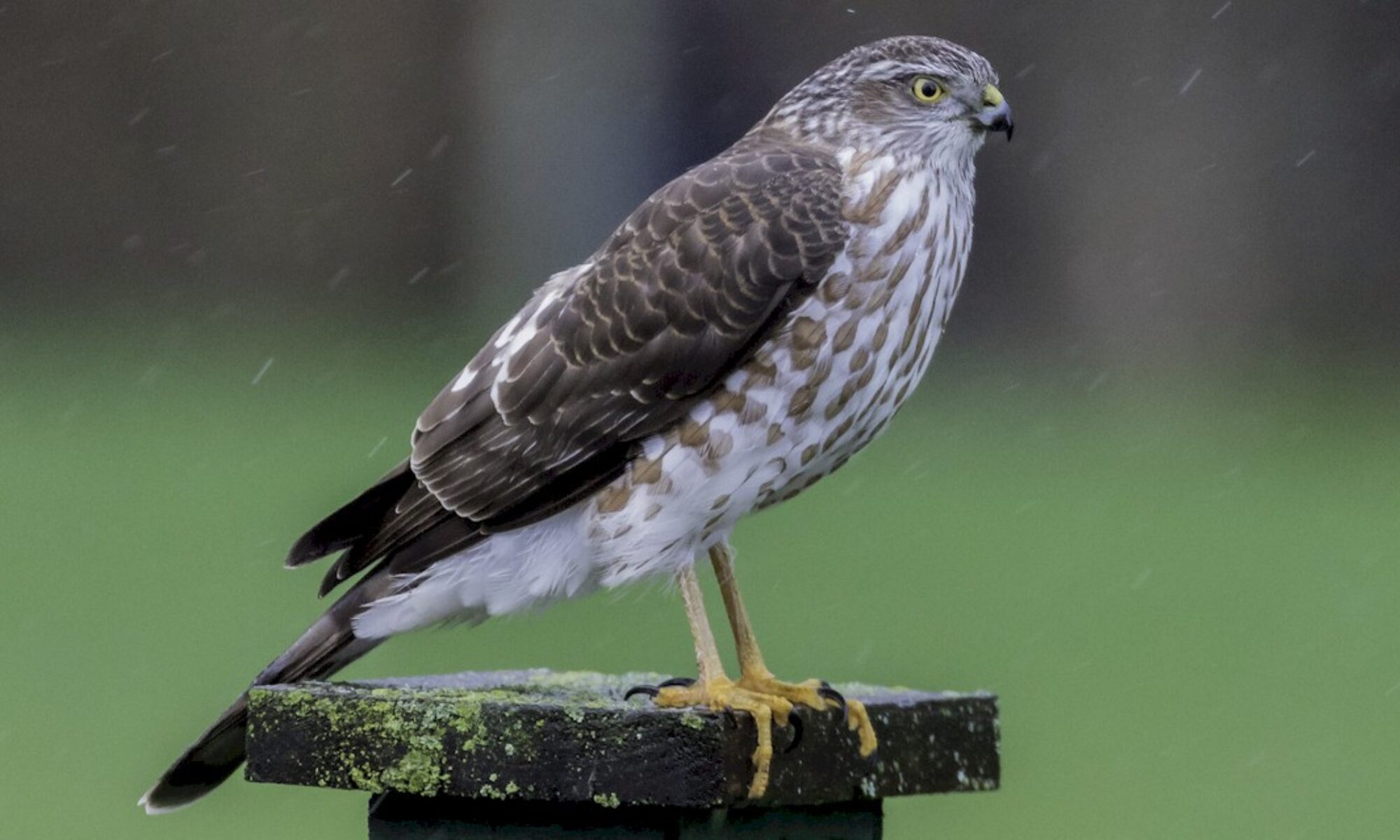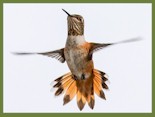We visited beautiful Costa Rica from December 2012 to January 2013. it was a wonderful adventure; we highly recommend it!
Tuesday, December 27th
Bob and I flew to the Costa Rican capital of San Jose. We rented a gutless little four wheel drive car and a navigation system, then drove to the busy Pacific seaside town of Jaco. After a long day of travel it was wonderful to get into the warm courtyard pool at the El Parico Azul (The Blue Parakeet). We found a wonderful restaurant in Jaco where we had dinner. We wandered through the shops and enjoyed the festive atmosphere.
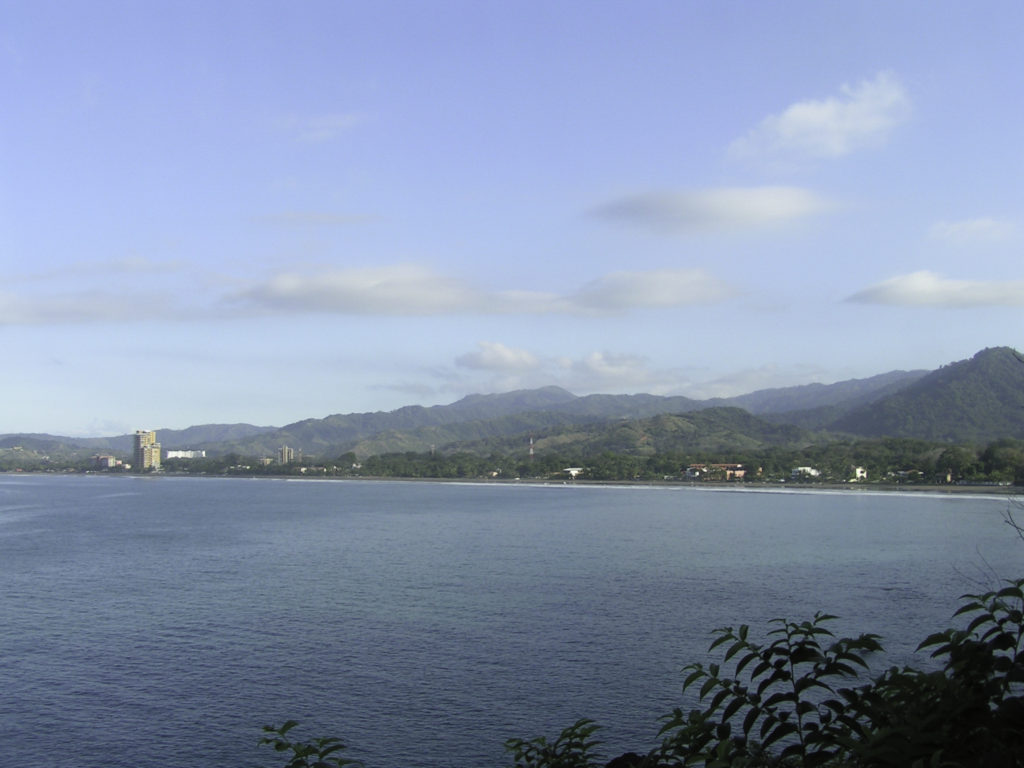
Playa de Jaco 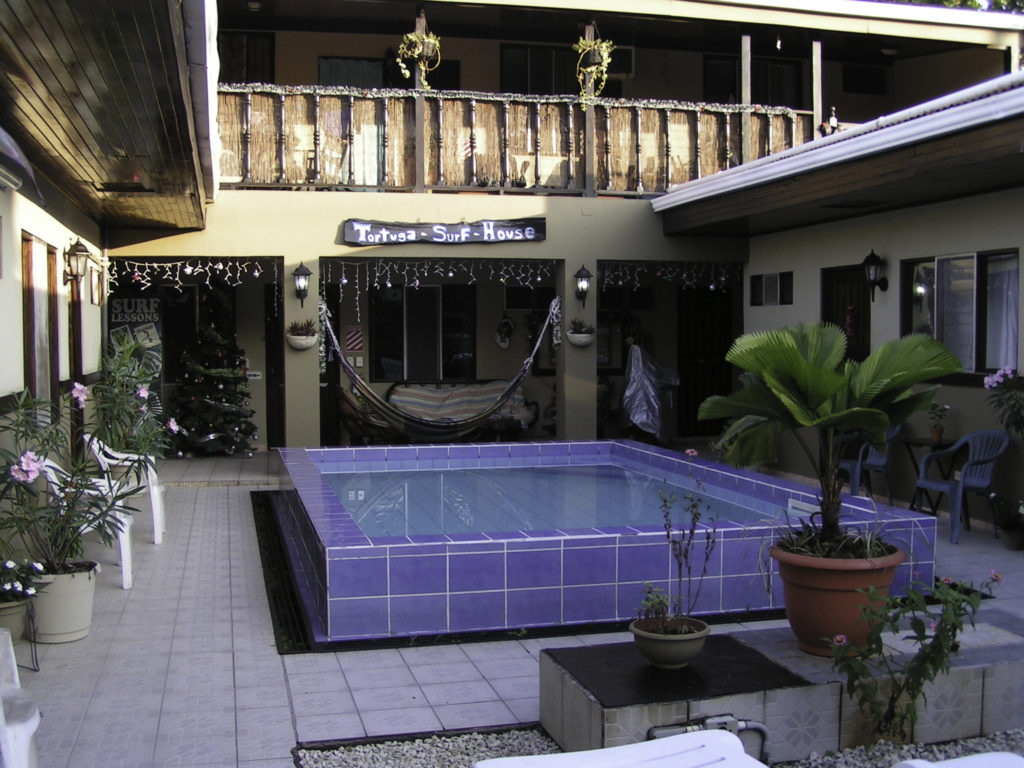
El Parico Azul (Blue Parakeet)

Wednesday, December 28th
We drove south down the coast in the early morning to the town of Quepos and the sunny beach of Playa Manuel Antonio. We enjoyed the sun, the turquoise waters, and the pelicans playing on the rocks.
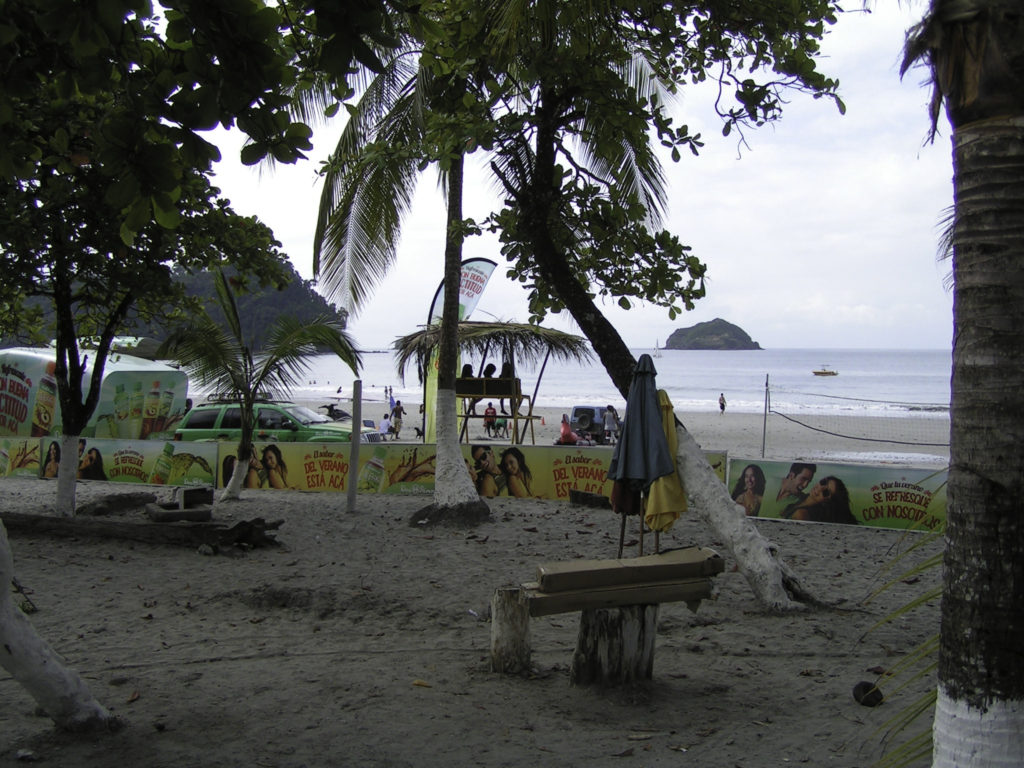
Quepos 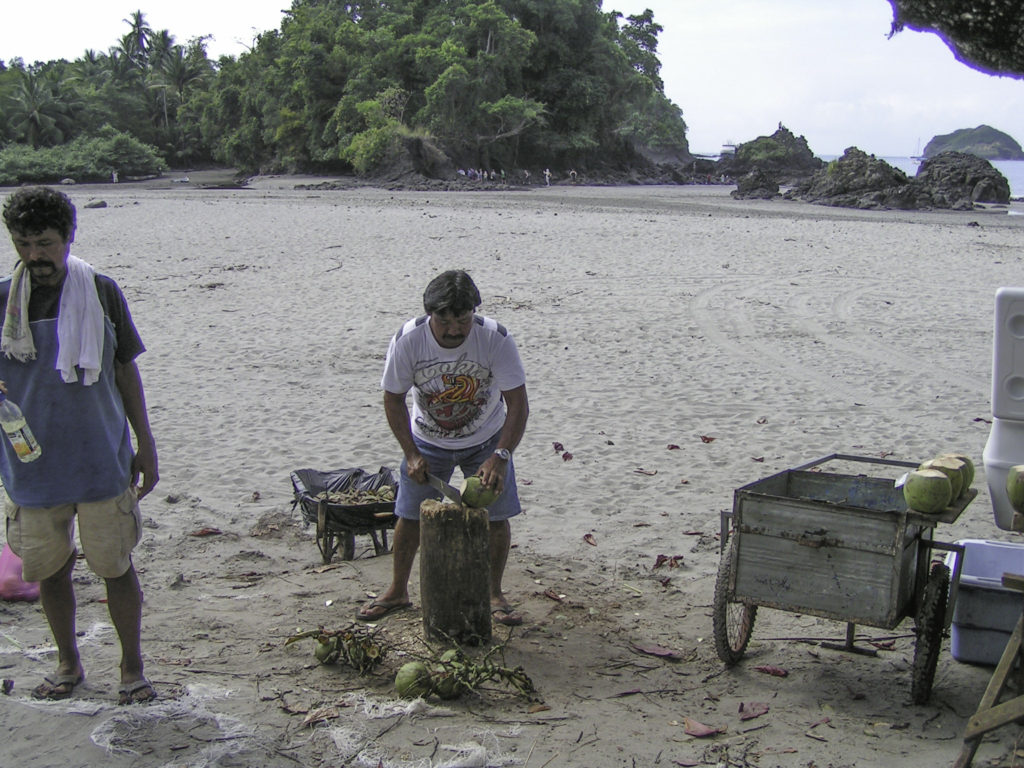
Coconut Seller
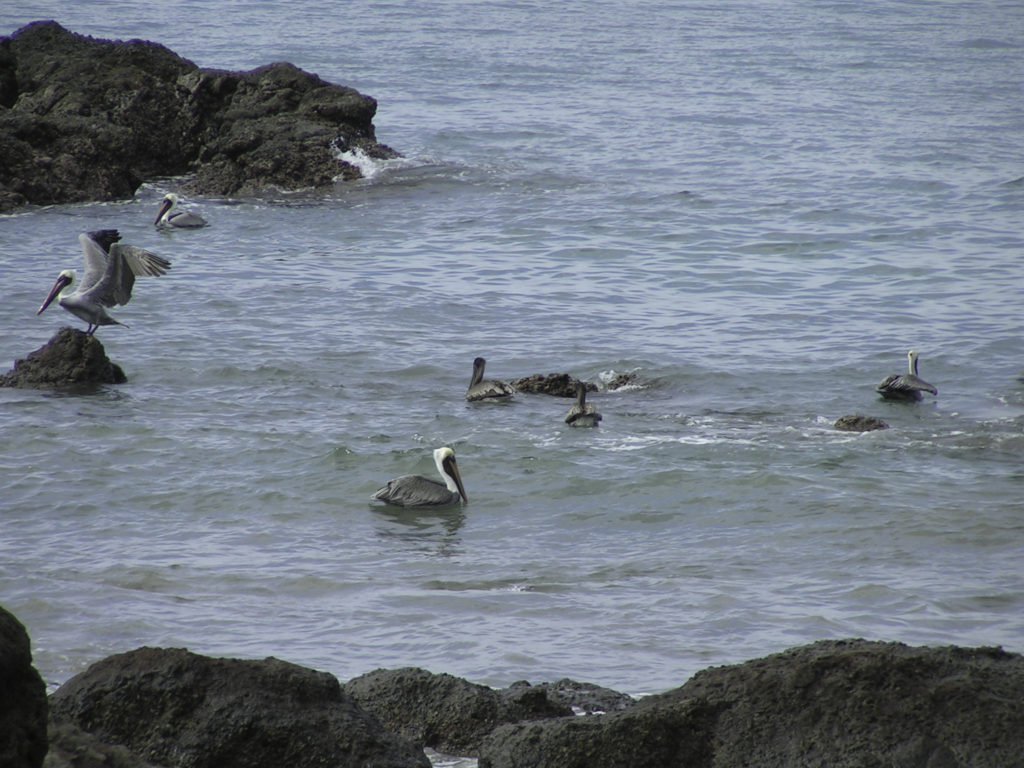
Playa Manuel Antonio
We took a guided tour of Manuel Antonio National Park, a protected marine and rainforest environment. We saw lots of iguana, a momma sloth with her baby, and plenty of colorful birds. The beautiful heliconia plants were abundant and an occasional Blue Morpho butterfly could be seen.
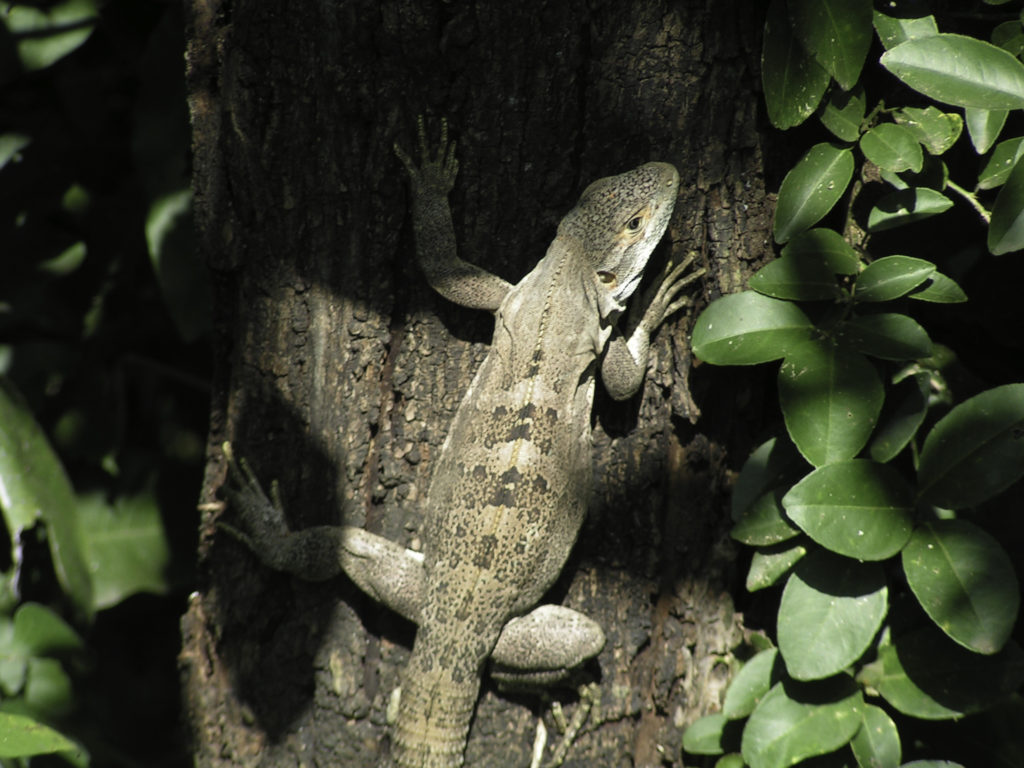
Large Iguana 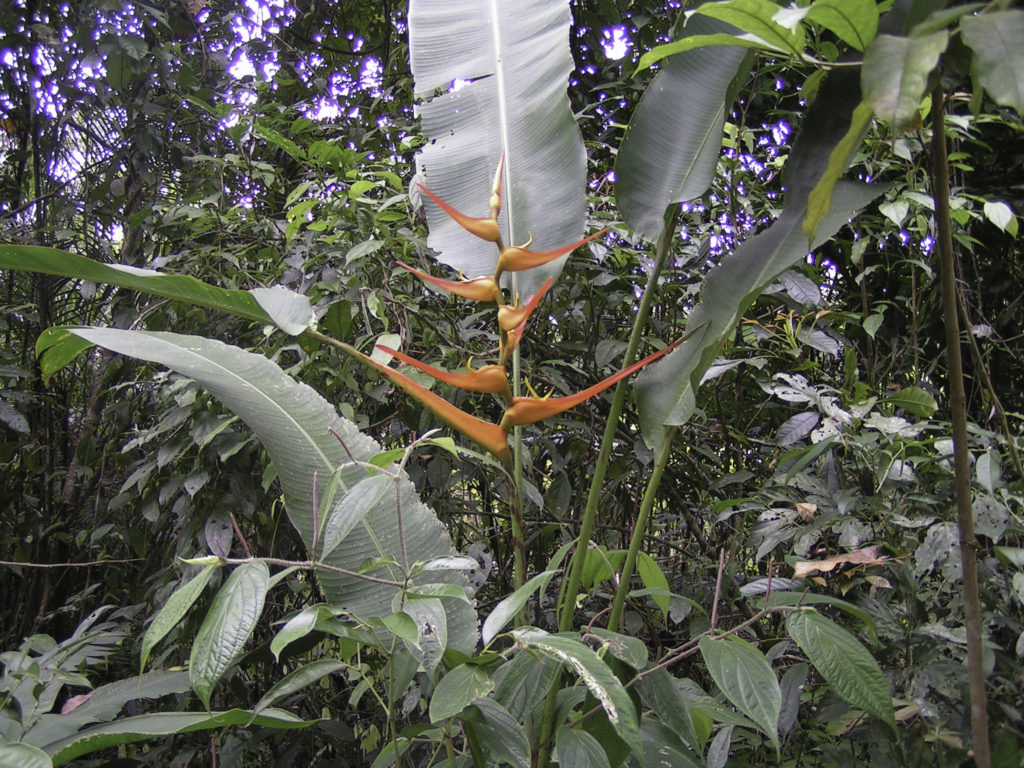
Heliconia
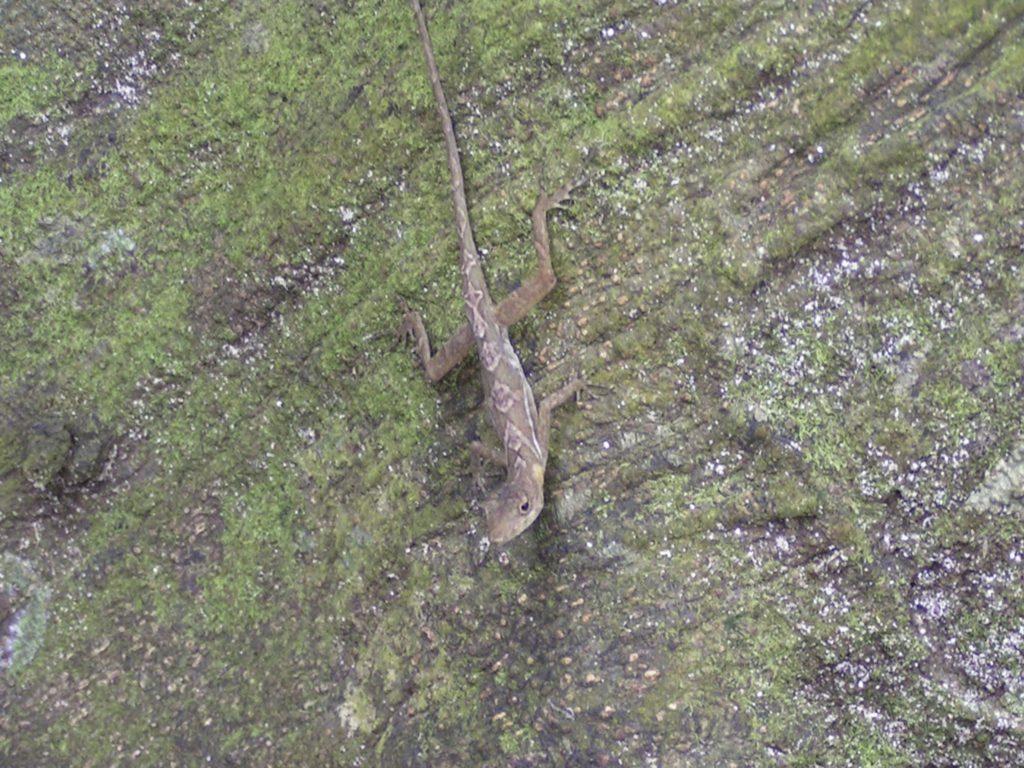
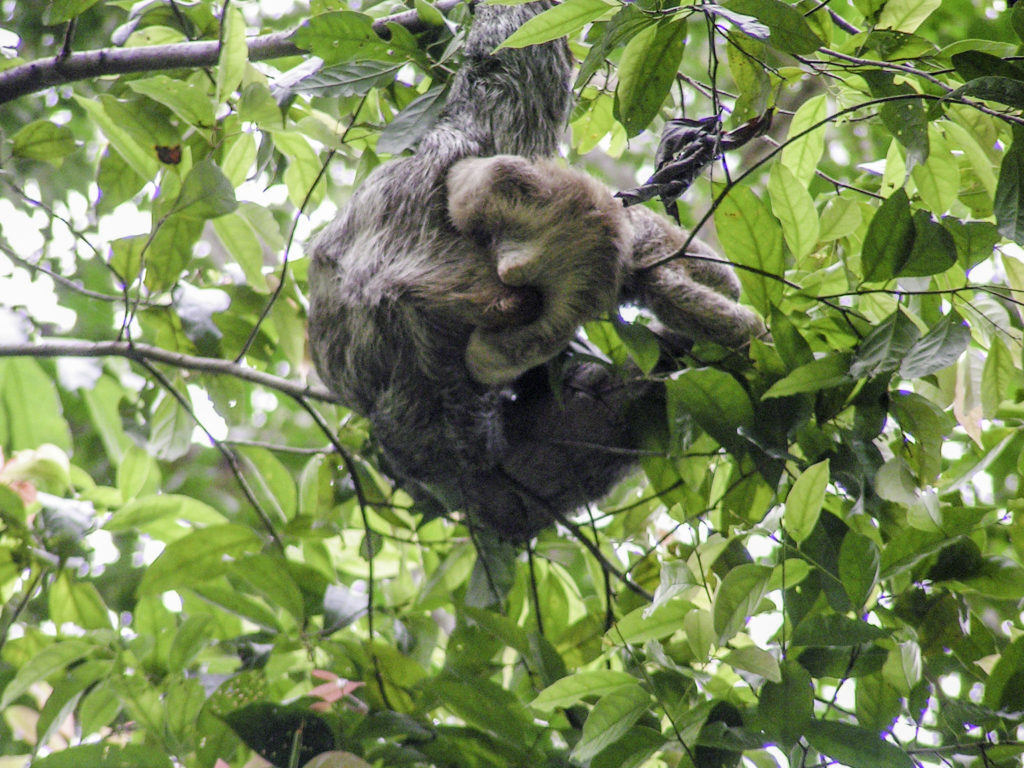
Mama Sloth and Baby
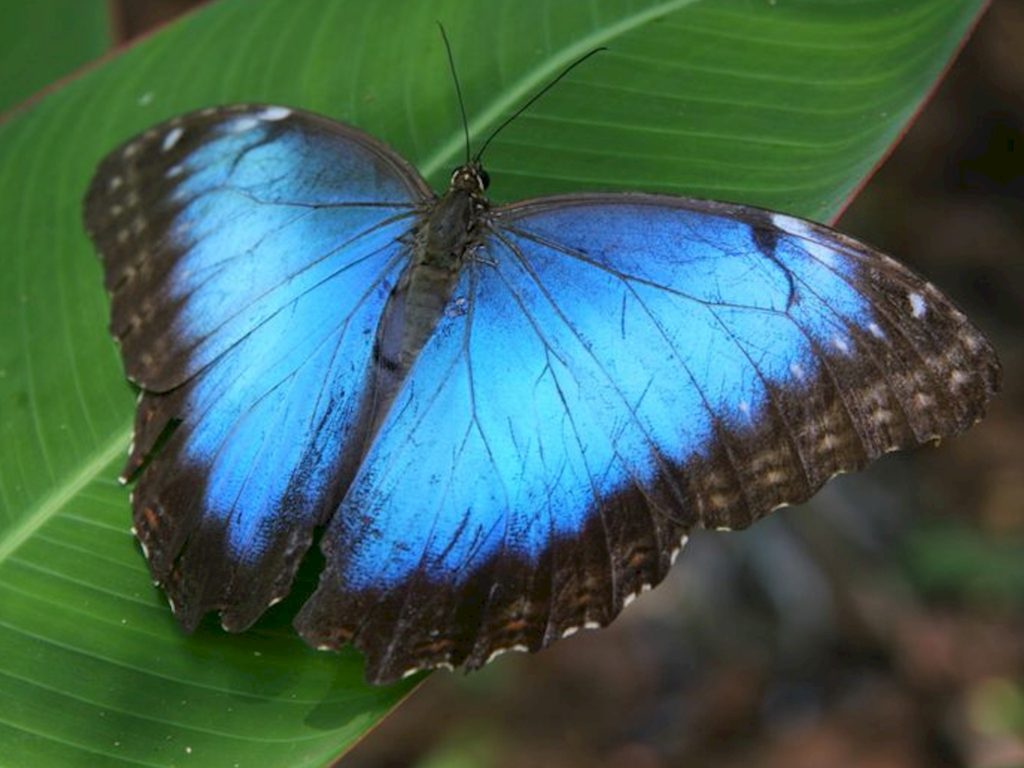
Blue Morpho Butterfly
We continued south and by late afternoon we arrived at the small fishing town of Sierpe. We met a friend that Bob had made on a previous trip, Pablo Chavez, who runs the Hotel Oleaje Sereno. Pablo welcomed us to his hotel and restaurante. As the sun was setting, he took us down the Rio Sierpe in his boat where a crocodile swam past us. It was cool! American Crocodiles average eight to nine feet in length.
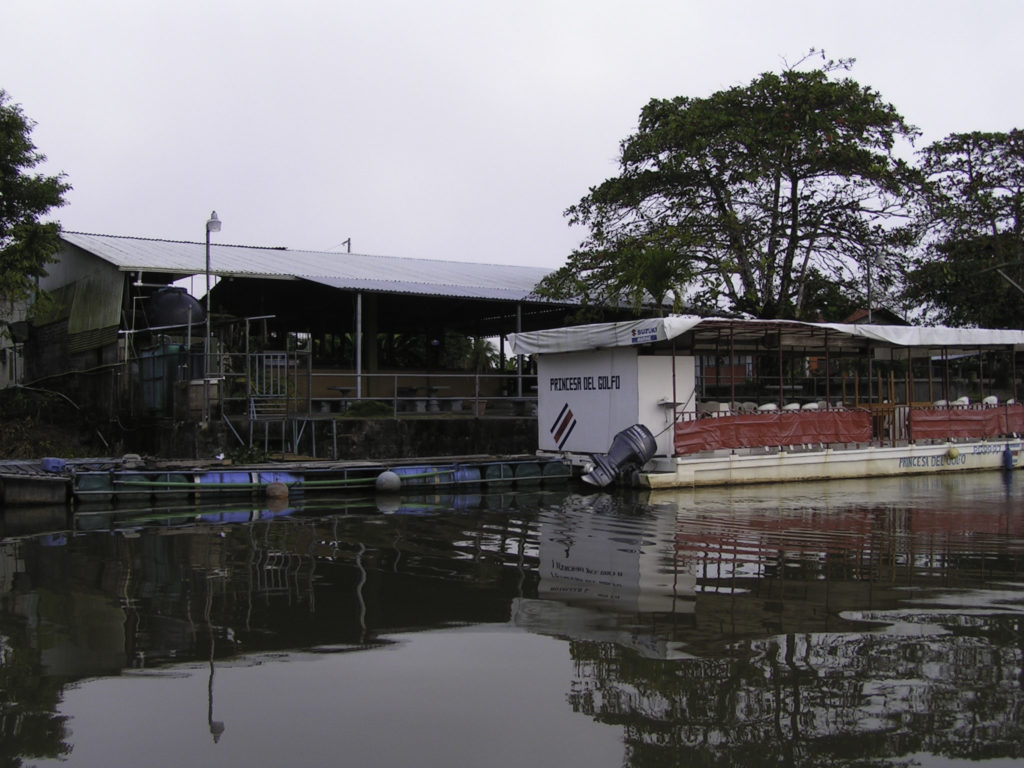
At Pablo’s on the Rio Sierpe 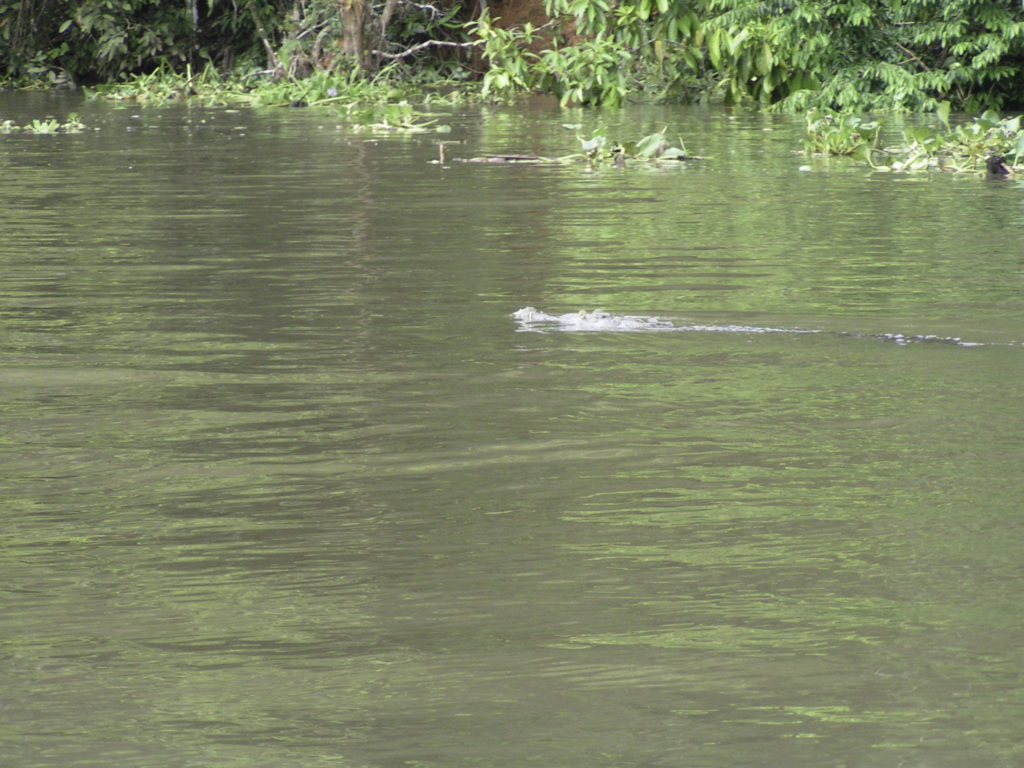
Crocodile in the River

Thursday, December 29th
In the early morning we drove around the Sierpe area exploring remote farm and wetlands. Many of the farmers produce bananas or palm oil. We saw many birds, including the Hawk and the White Ibis.
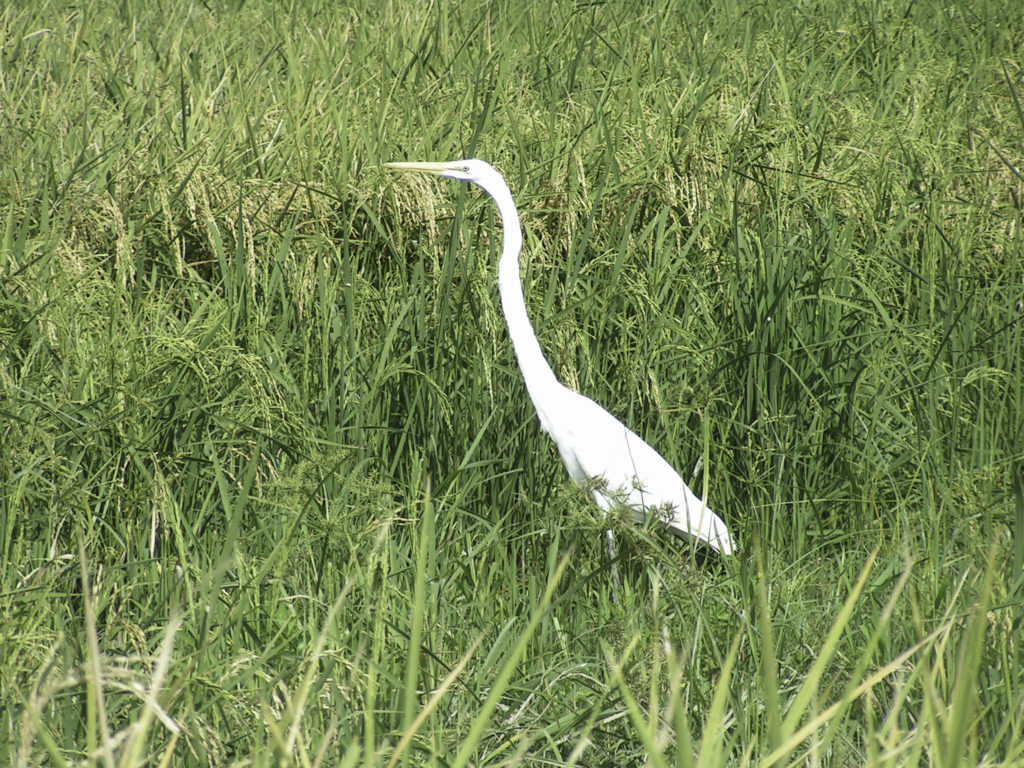
White Ibis 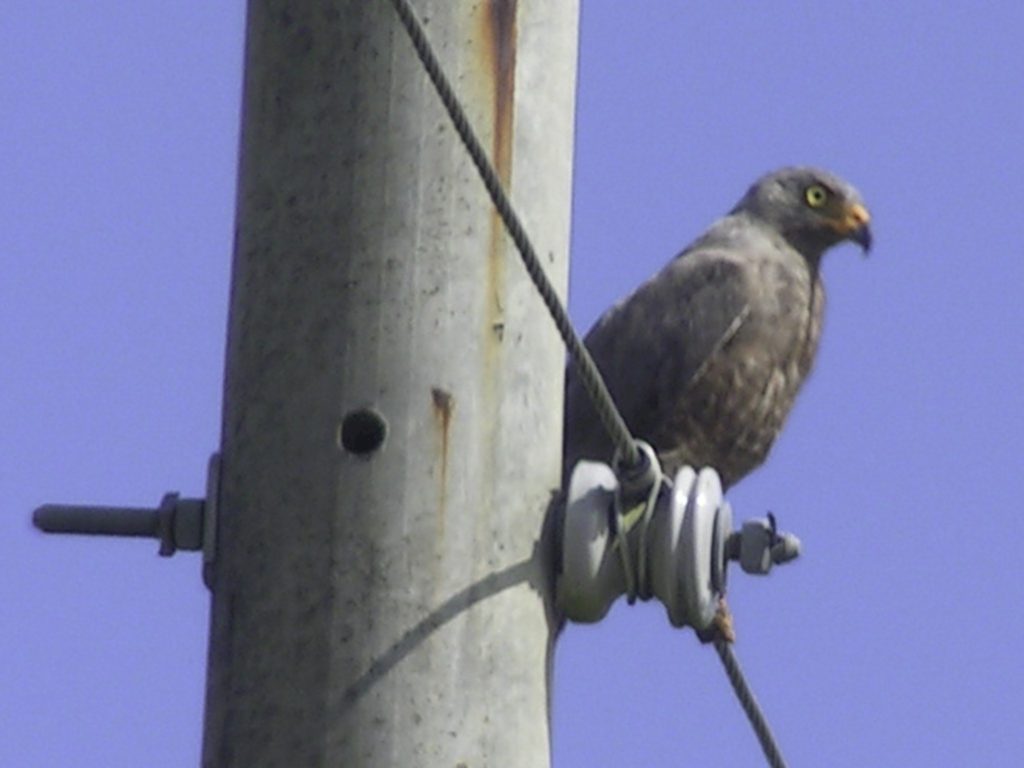
Hawk
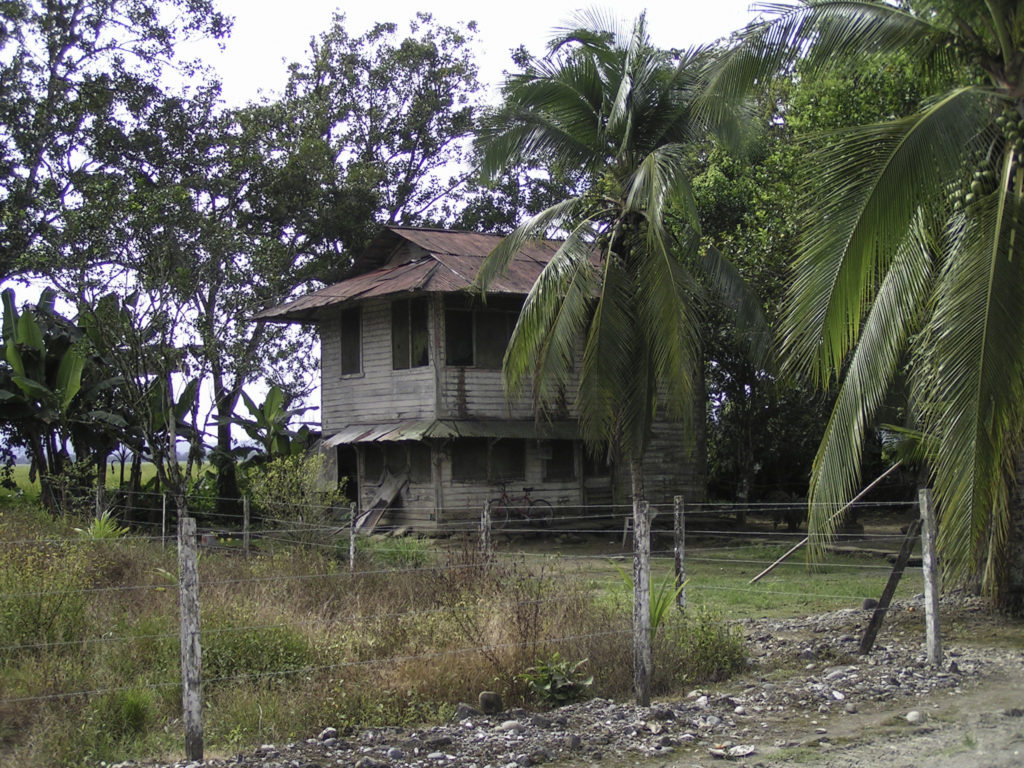
Banana Plantation Farmhouse
When we returned to Sierpe from our drive, Pablo took us up the river. The Sierpe rises and falls with the Pacific tides and as the water level fell the crocodiles, camen, and turtles came out of the water to enjoy the sunny river banks. Camen are much smaller than the crocs and sport a wicked grin. When the boat gets too close to crocs they go into the water, but not so with the bold camen; they don’t seem to mind the close encounters. I was excited to see howler monkeys; the first monkeys I’ve ever seen!
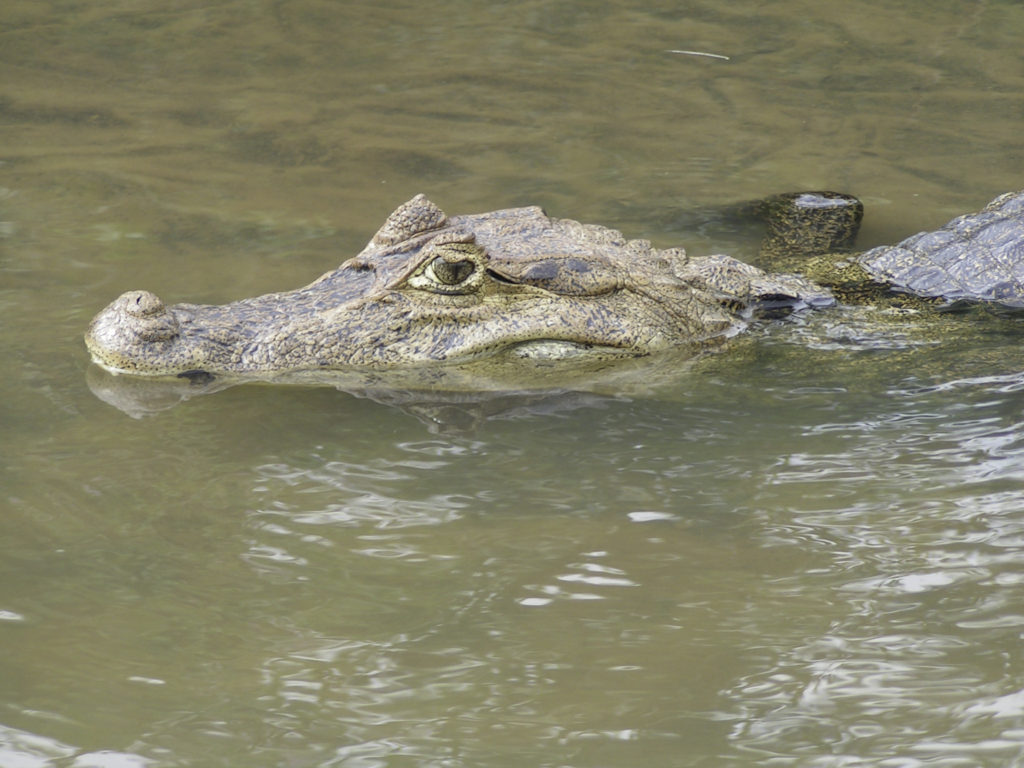
Close Encounter! 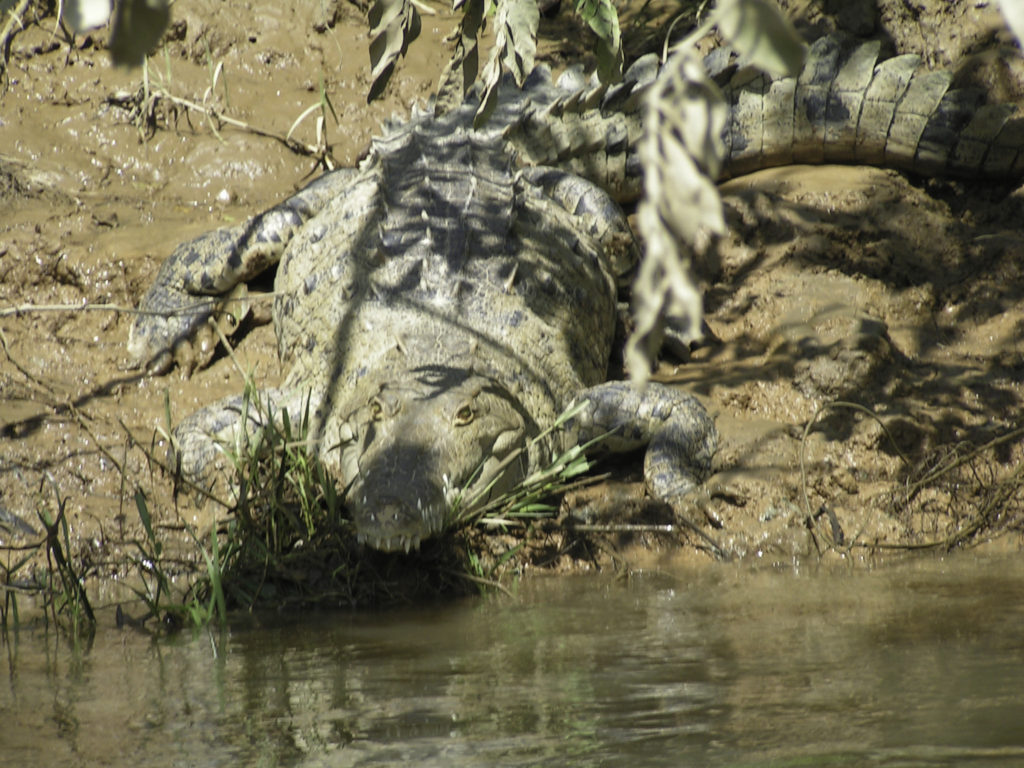
Crocodile 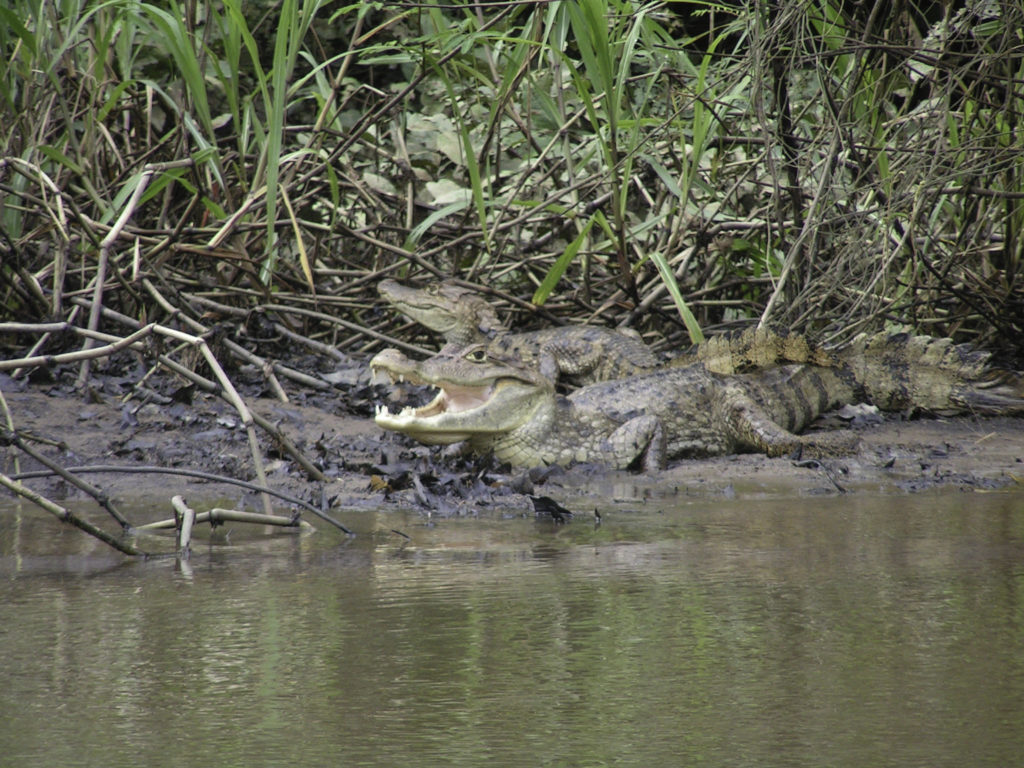
The Camen Wicked Grin
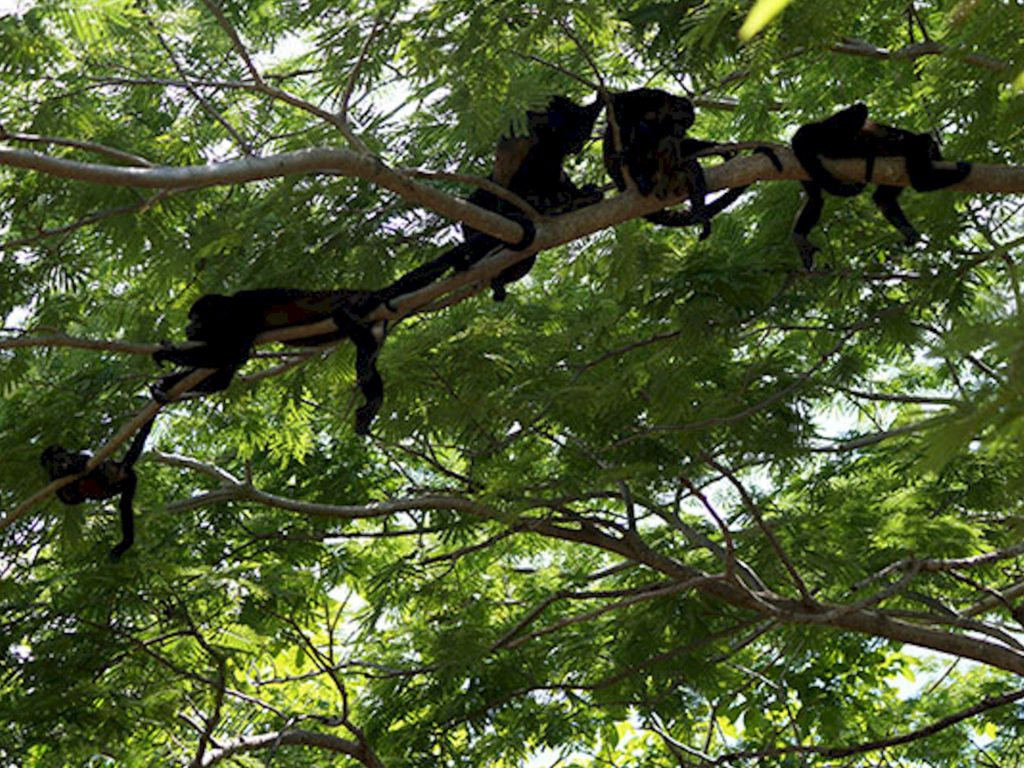
Howler Monkeys in the Treetops
We spotted four turtles (or tortugas) on a log near the river bank, but as we floated closer they dropped one by one into the water. As we floated down the river Bob and Pablo tried unsuccessfully to catch some Red Snapper. Pablo maneuvered his craft into some small backwater tributaries where we saw some amazing jungle habitat, including trees with really unusual root systems.
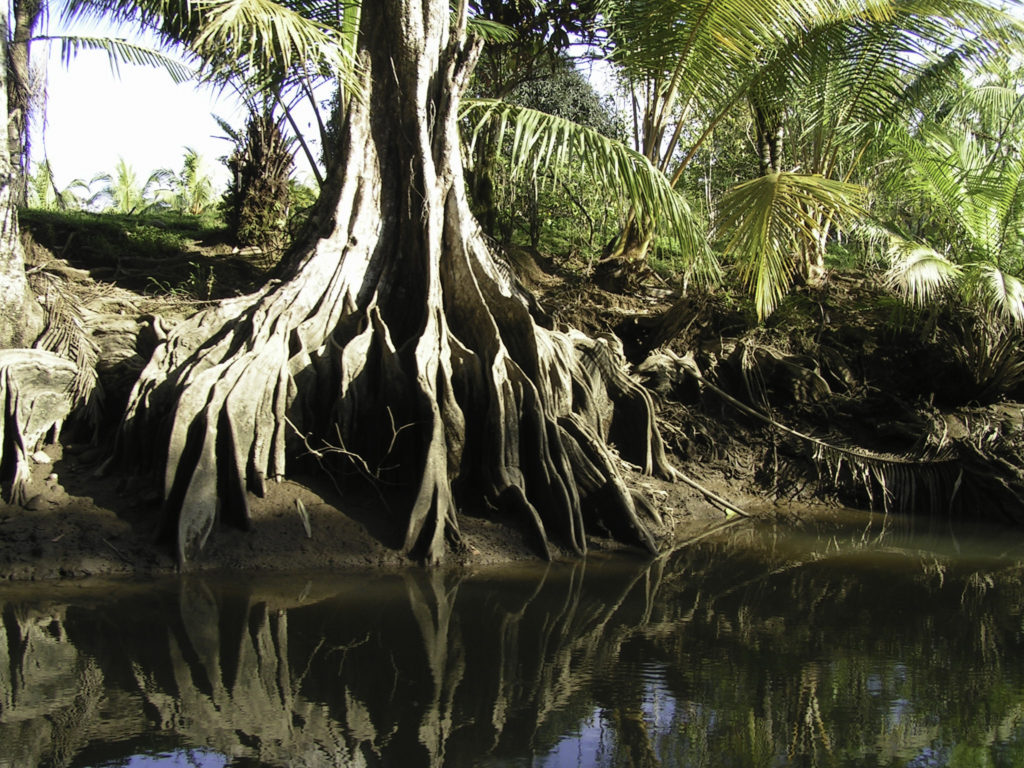
Cool Tree Roots 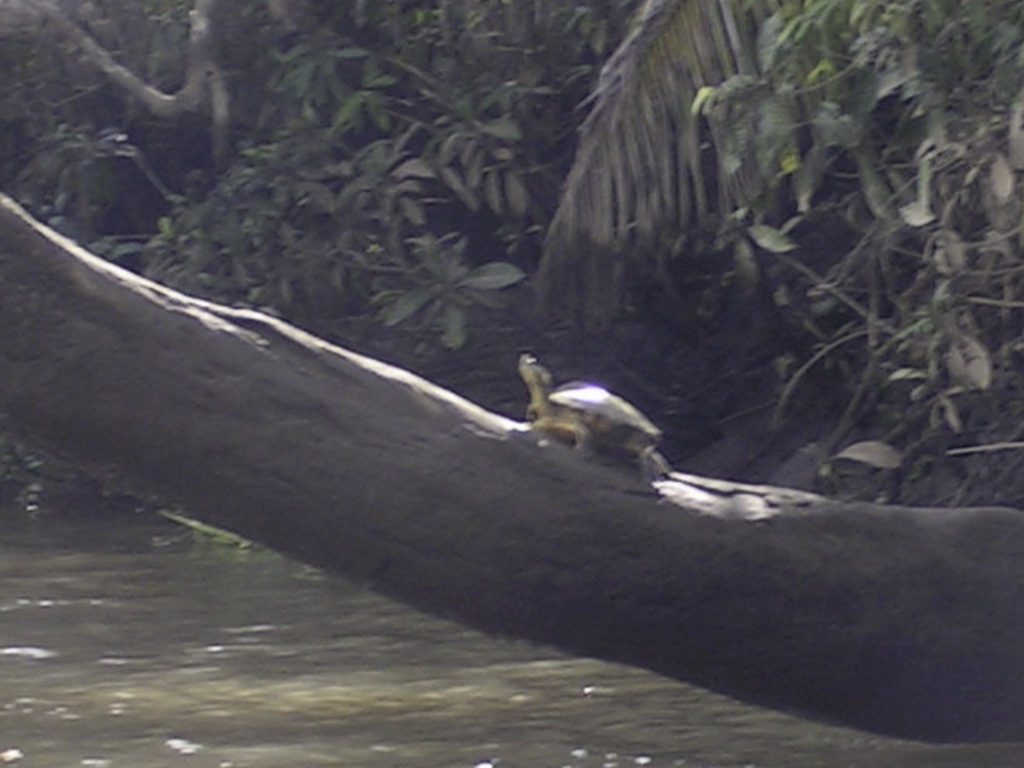
Turtle
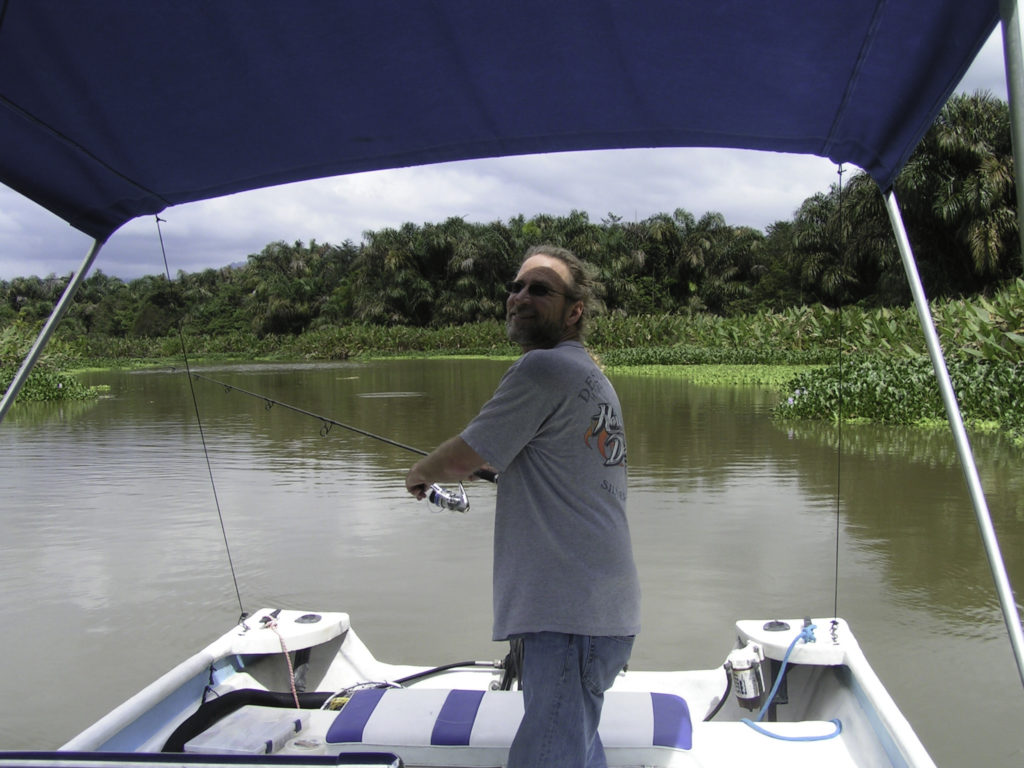
Fishing for Red Snapper in the Rio Sierpe

Friday, December 30th
We left Sierpe early and drove south over the most amazing highland areas and down into the tropical Osa Peninsula – the most humid area in Costa Rica. The jungle habitat was dense and beautiful. The southern-most tip of the Osa Peninsula is Cabo Matapalo. We found a fabulous place called the Buena Esperanza Bar-Restaurant where the food is great and the night life laid back and colorful. We met someone at the bar who offered us a tent for the night near a perfect, tropical beach. We checked out the tent at a surfer camp called Kapu. It looked adequate, so we approved it. We found that the Pacific ocean’s call was too good to pass up, so we went for a swim in the warm blue sea. The waves were perfect for the surfers, but they knocked me off of my feet and snatched away my sunglasses. I decided to wade near the beach.
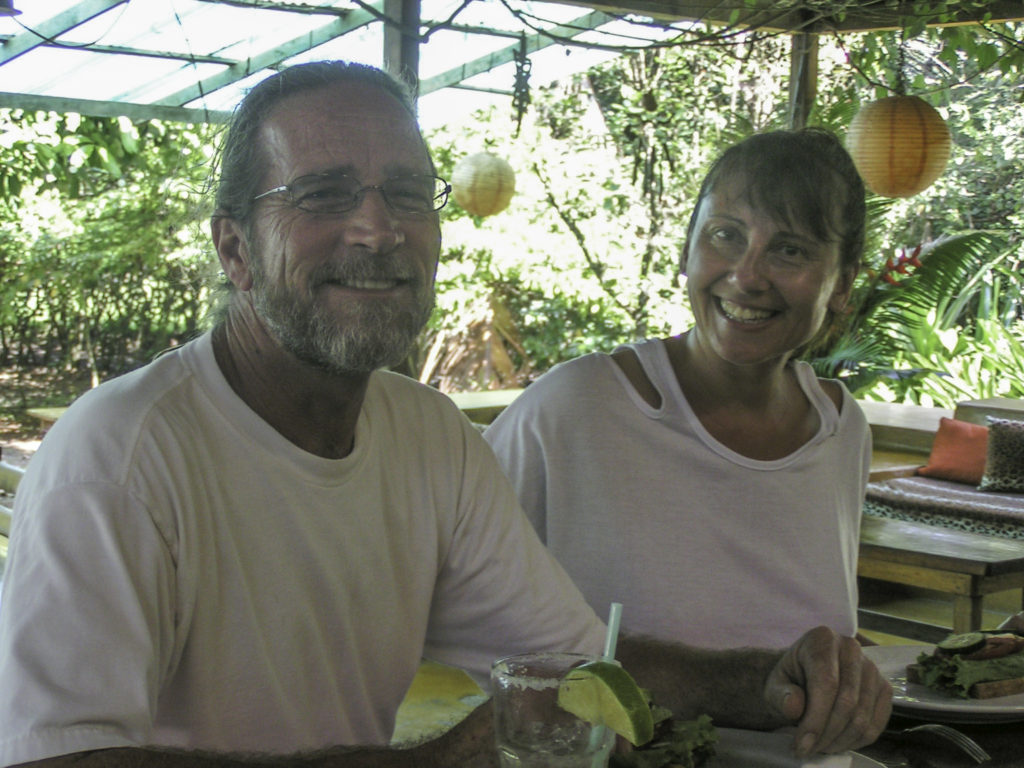
Hangin’ at Buena Esperanza 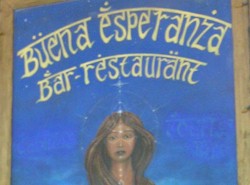
Buena Esperanza Bar and Restaurant 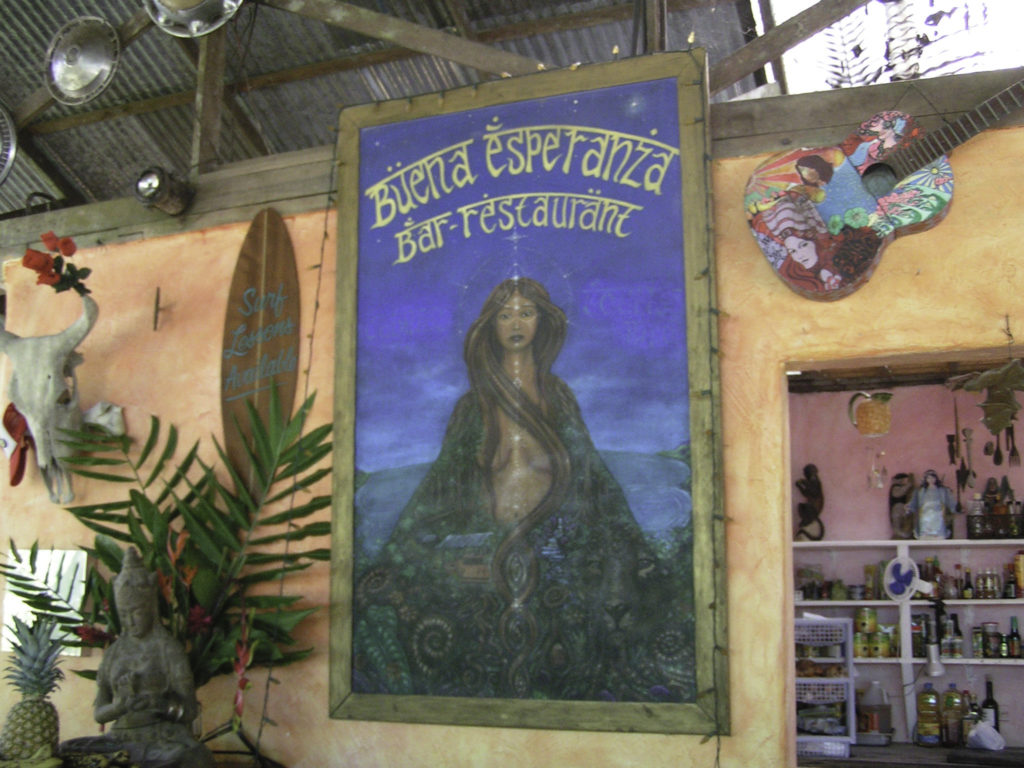
Buena Esperanza Bar and Restaurant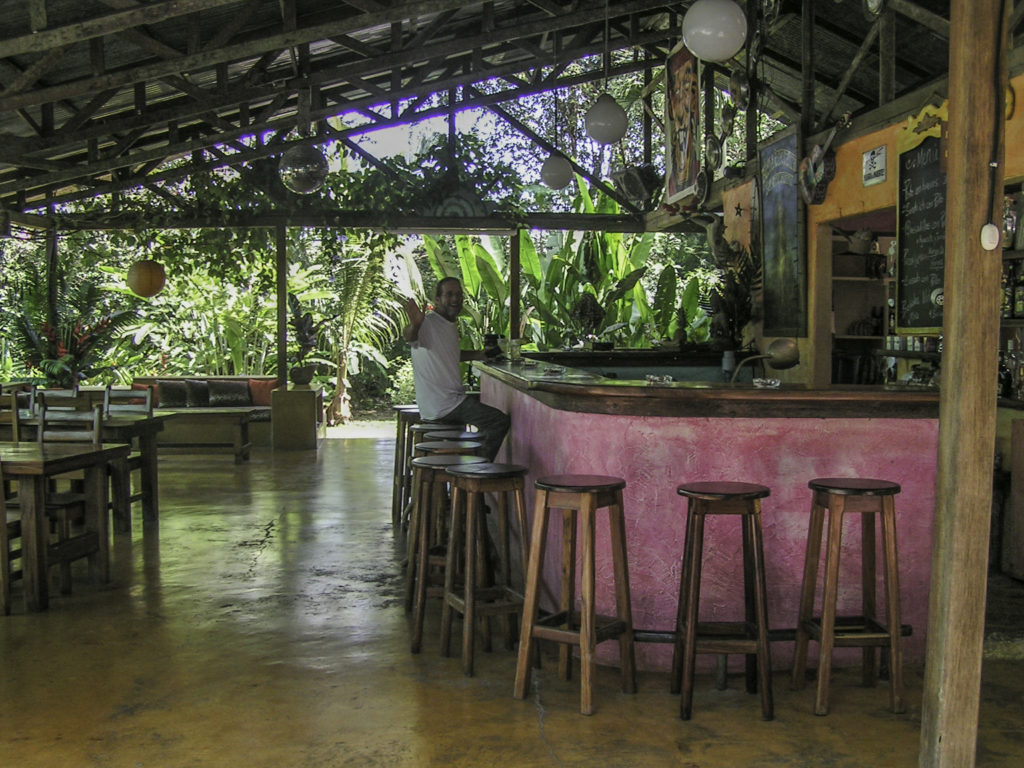
Bob at the Bar
After our swim we took the car as far as we could along the Osa coastline, ending up in remote Carate. The humidity was oppressive; thank goodness for air conditioning! The roads were treacherous and our little car impressed us greatly.
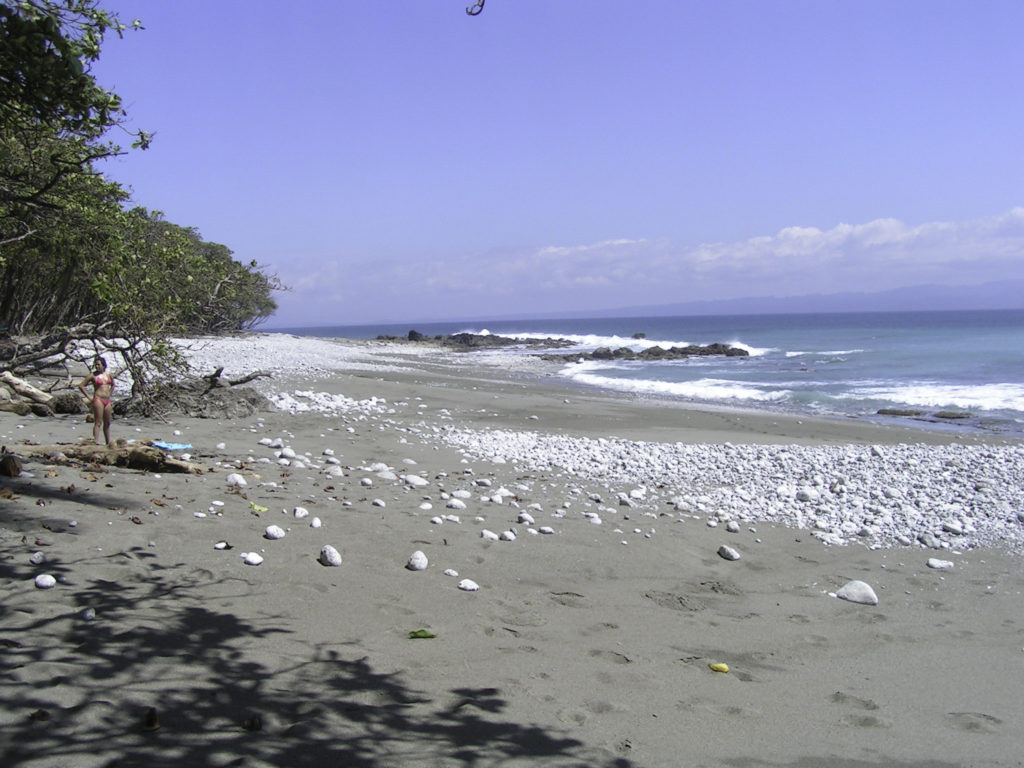
Playa Carate
At sundown we returned to the Buena Esperanza Bar for dinner and had a fun evening listening to blues, Jamaican, and old rock and roll in a delightfully hippie-surfer atmosphere. We left the bar late and drove along the bumpy tract to our little rented tent. We slept very little in the damp, clammy tent in dank, dirty cloths and decided long before sunrise that we would rather be someplace else.

Saturday, December 31st – New Year’s Eve Day
We found our car using the light from Bob’s iPhone, left the surf camp and the humid Osa, and returned to the highlands. As the sky lightened we came to a restaurant perched on a high ridge. No one was around, but there before us was one of the most beautiful sites I thought I had ever seen: a small sink and a restroom! While I took a makeshift bath and washed my hair, Bob discovered that the place was surrounded by tropical gardens. The land dropped away on both sides of the road and as the sun came up, the views in all directions were breathtaking. We sat on a tiled patio and watched Toucans eating papaya in the trees, many butterflies frolicking among the flowers, and some beautiful Scarlet Macaws flew past. The owner showed up, welcomed us warmly (in good Costa Rican style), and made us our favorite cafe’ con leche’. Life was good! Or, as the Ticos and Ticas say: Pura Vida!
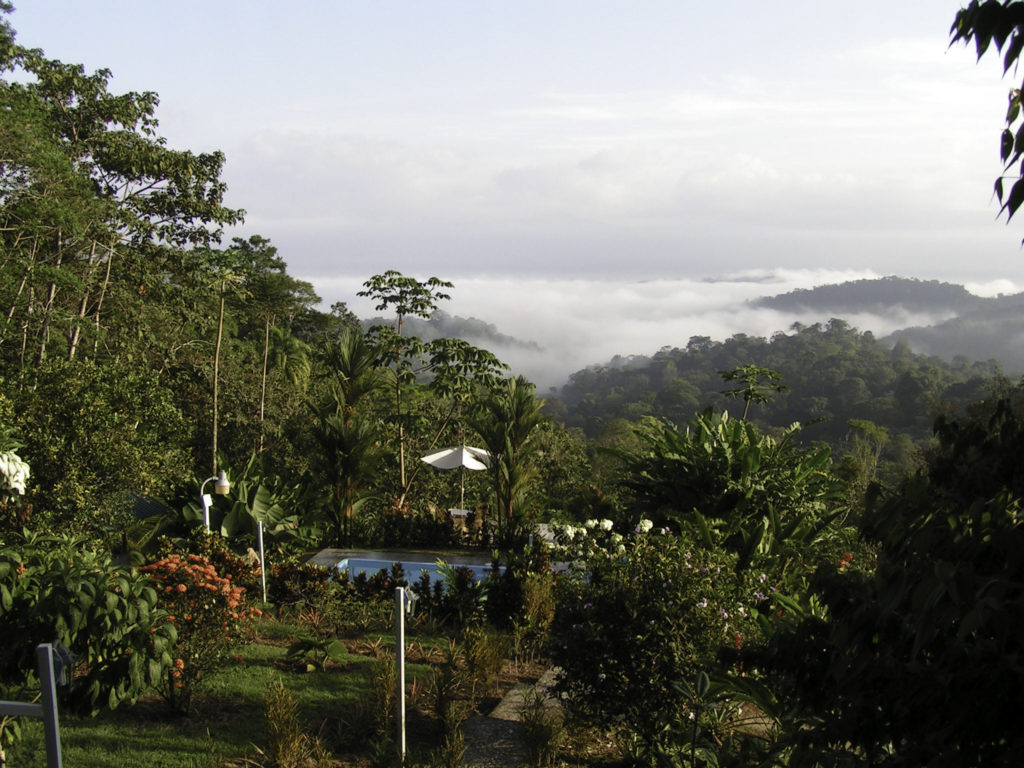
Tropical Garden Paradise 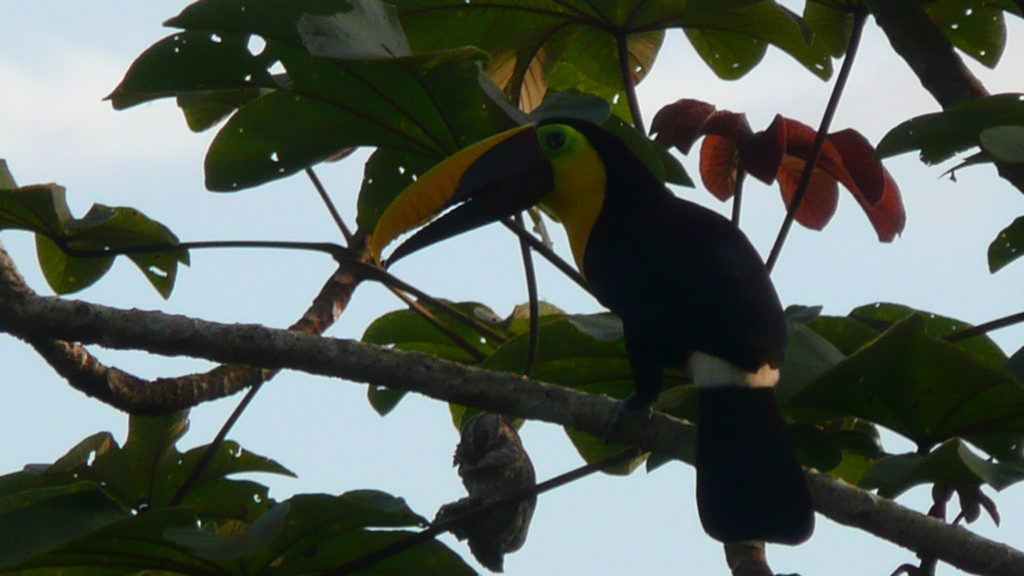
Toucan in a Papaya Tree
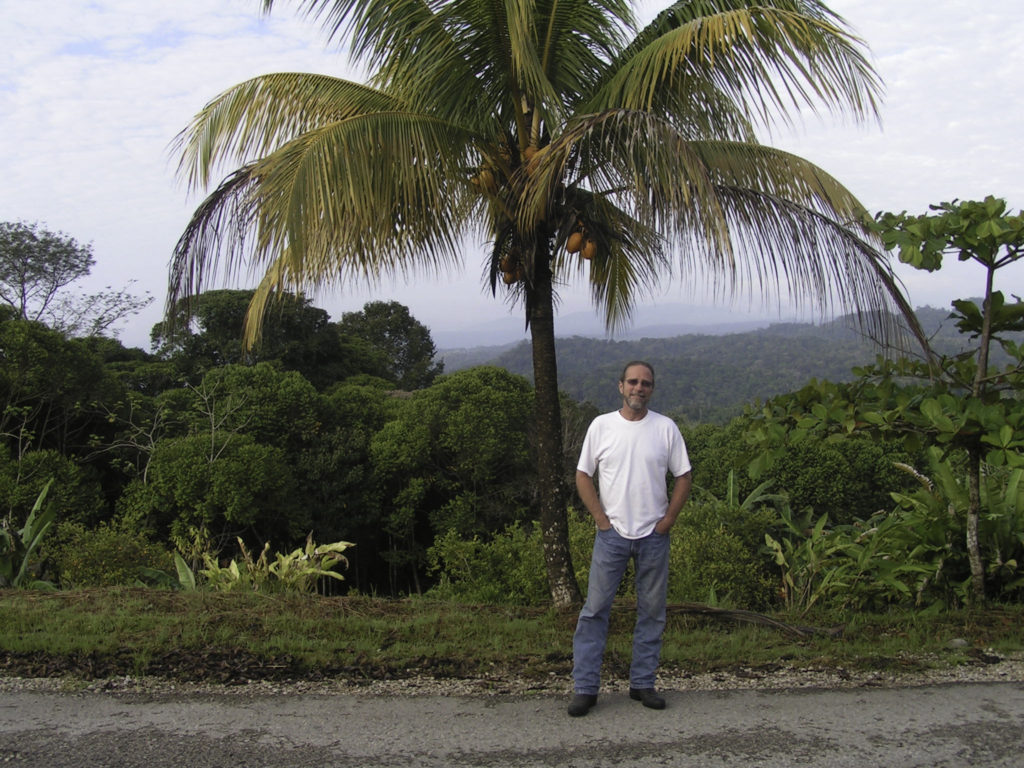
Bob Exploring the Tropical Garden
We continued our journey north, heading to our destination of Santa Elena and Monteverde. On the way up the coast we came to a high bridge with crowds of people looking down. We decided to investigate and discovered a large bask of crocodiles on the sandbars below. They were almost motionless until a fellow watcher dropped a large chunk of fish into their midst. When the fish hit the sandbar the crocs exploded into action. It was scary and thrilling all at once! The guy dropped a few more fish pieces and the crocs were on them like greased lightening. The guard rails on the bridge were low and all I could think of was: don’t fall off this bridge!
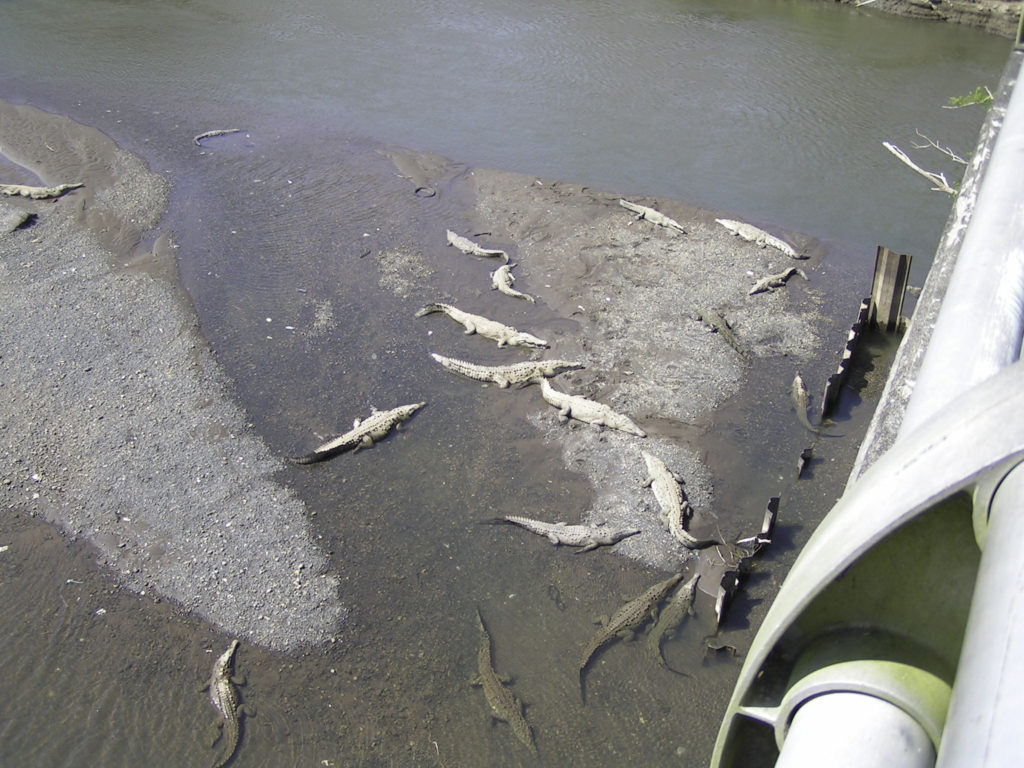
Crocodiles Below the Bridge 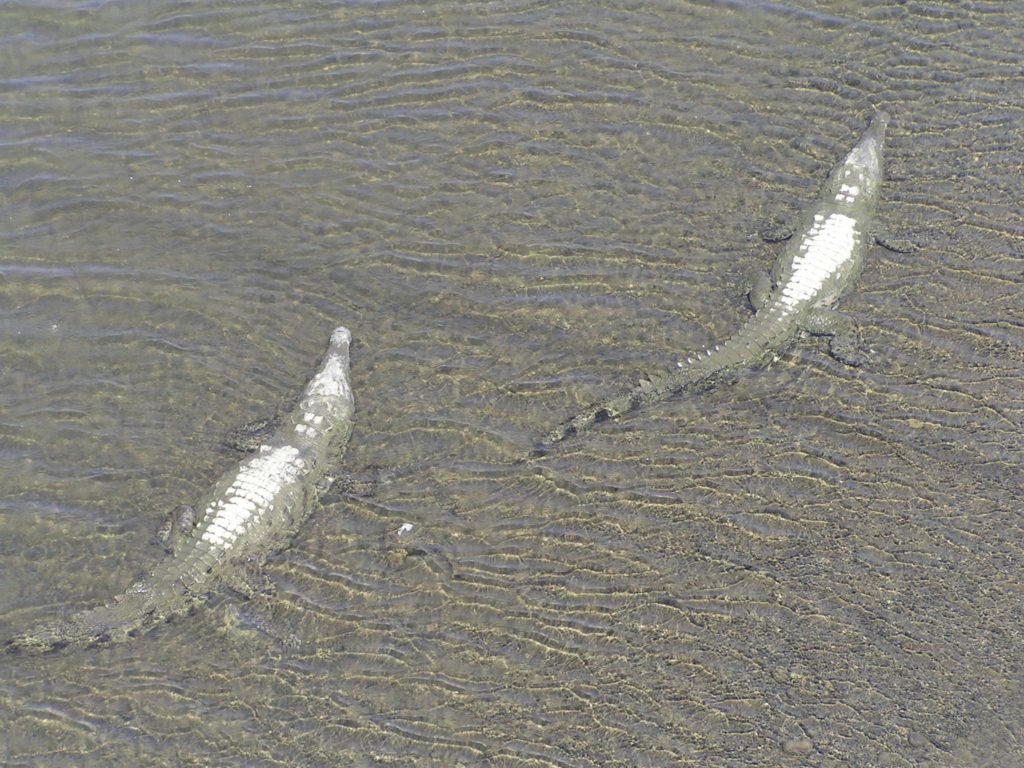
A Closer Look
Santa Elena is a town crowded into the high peaks just below Monteverde, a 4,700 foot high cloud forest reserve. Bob had visited Monteverde on his last trip and was eager to see once again the world’s most elusive and beautiful bird: the Resplendent Quetzal. Unfortunately, we both were rapidly coming down with a cold and fever. So, we checked into the beautiful Hotel Fonda Vela and after the humid discomfort of our previous night, the large, air conditioned room was a wonderful sight. We went to dinner at the hotel restaurant’s elegant fireside room. To our delight we were the only ones there for most of our meal; our dinner was served by several attentive waiters. The food was excellent and the wine delicious. It was a marvelous New Year’s Eve!
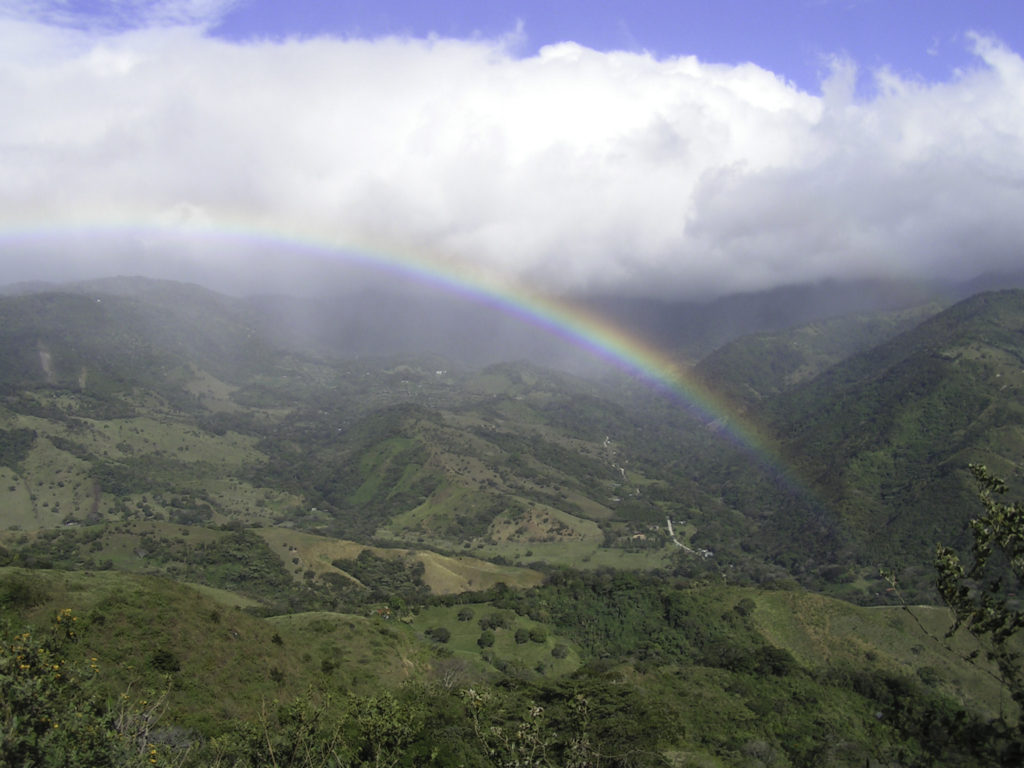
On the Way to Santa Elena 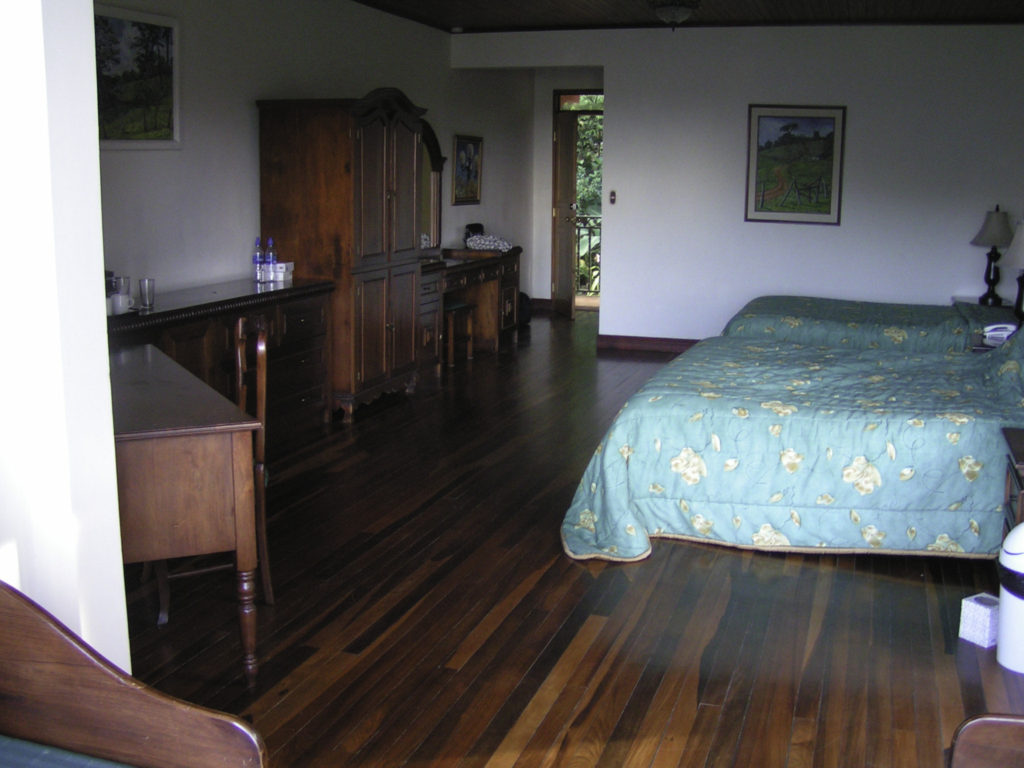
Our Room at Fonda Vela 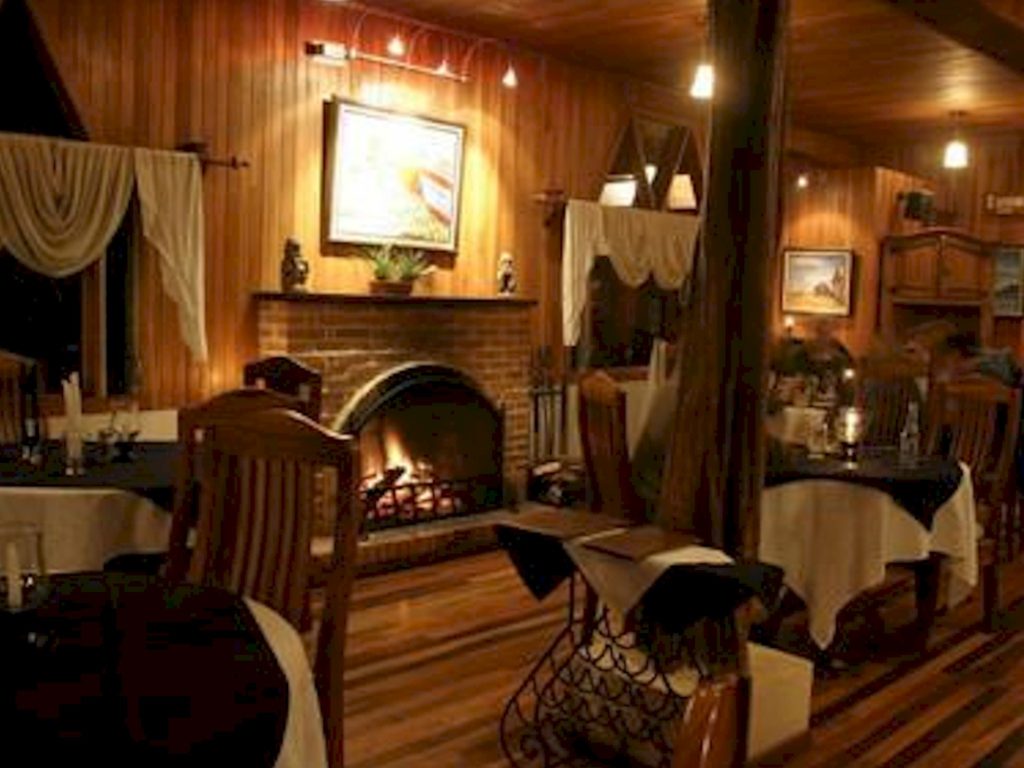
Fonda Vela Restaurant on New Years Eve

Sunday, January 1st – New Year’s Day
We woke up with stuffy heads and fevered bodies, but gamely set out to explore the Monteverde cloud forest. The wind was blowing hard and there were very few birds to be seen. We did see a Kinkajou (a nocturnal mammal and a distant relative of the raccoon) and a Blue Crowned Motmot from our hotel parking lot. In the cloud forest we saw wild deer, a Slate-throated Redstart, and a pudgy purple-toned bird called a Black-faced Solitaire. We were delighted with the humming bird gardens near our hotel. There were several feeders all filled with these tiny colorful birds.
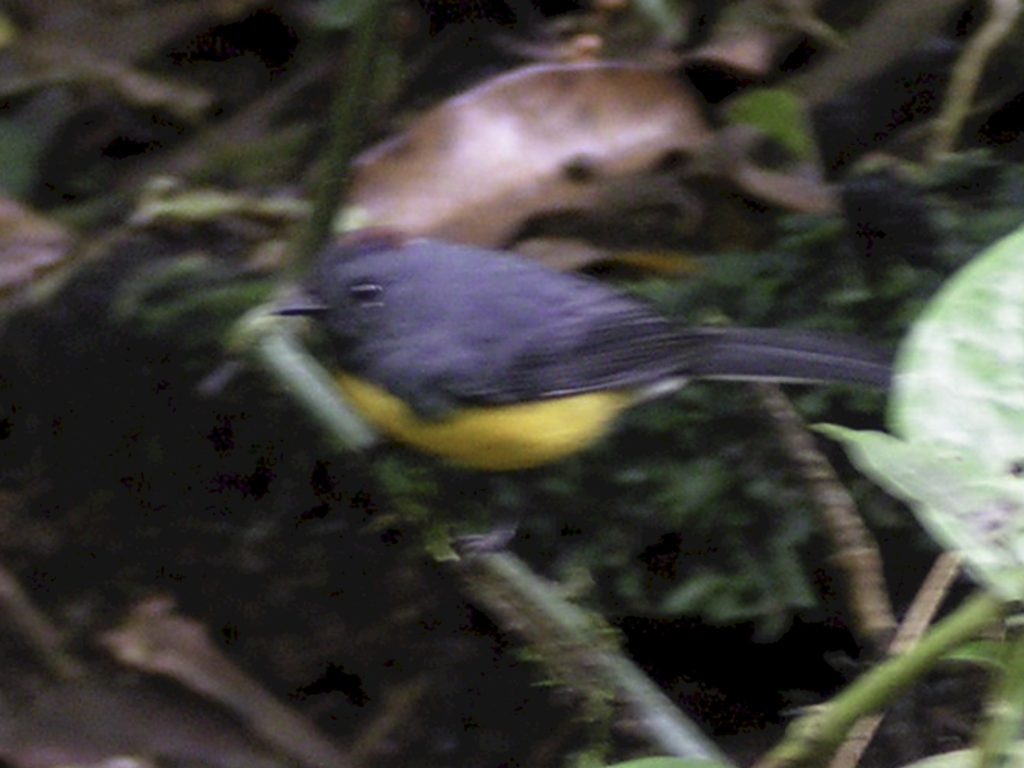
Slate-throated Redstart 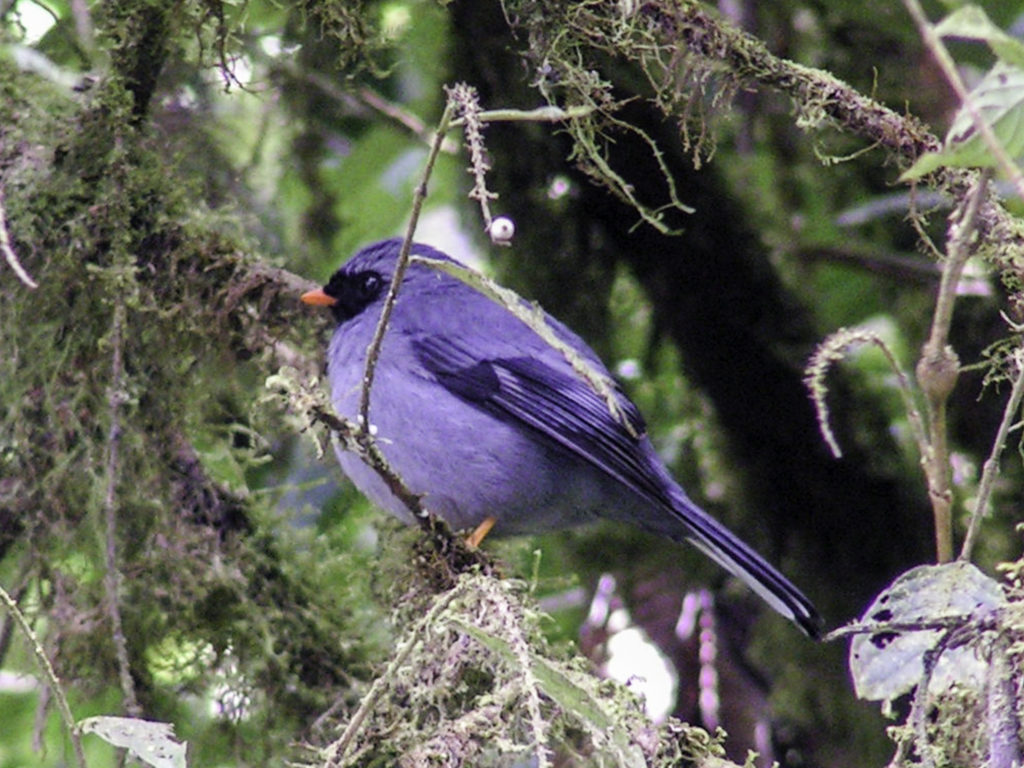
Black-faced Solitaire 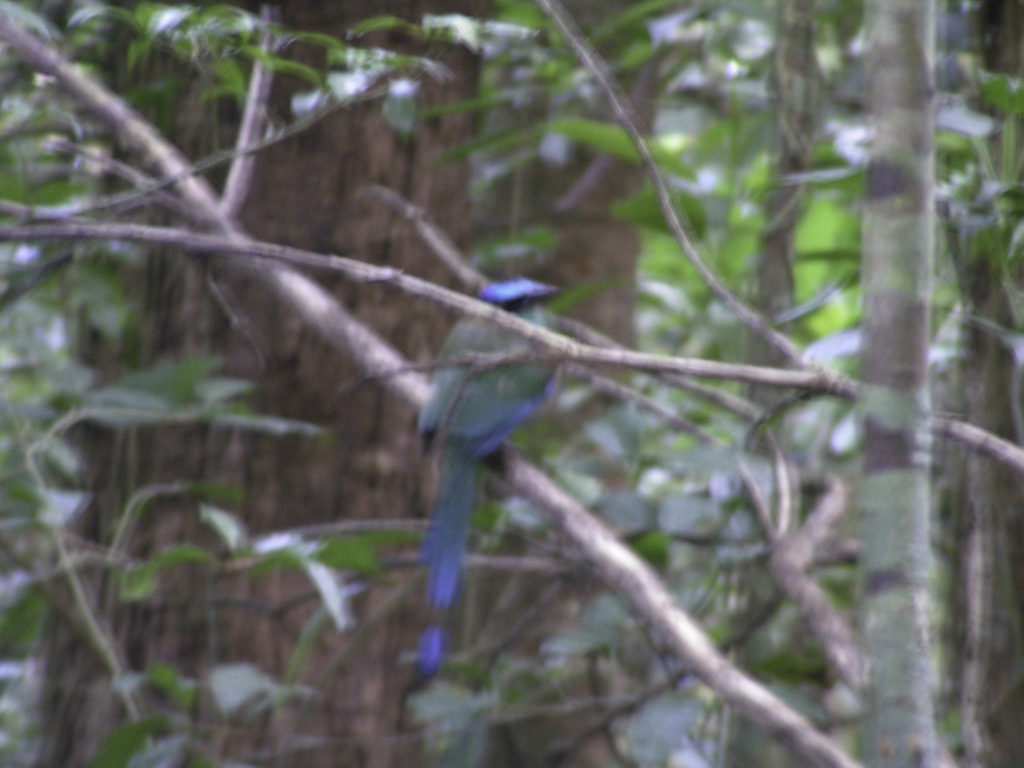
Blue Crowned Motmot 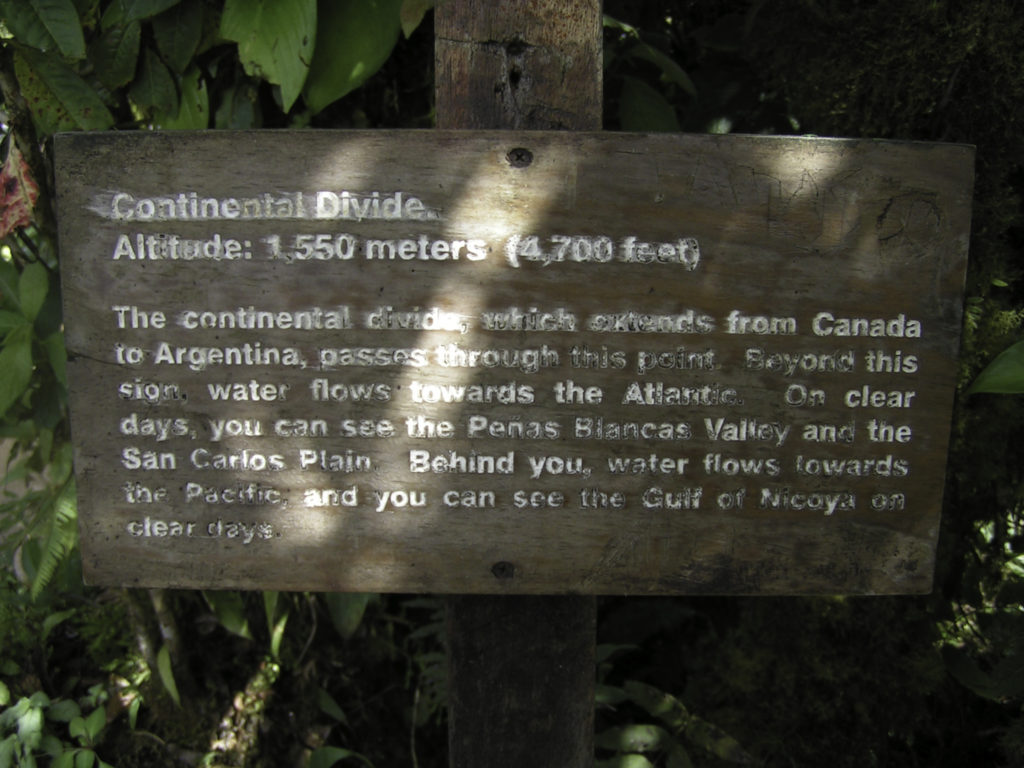
Contenental Divide 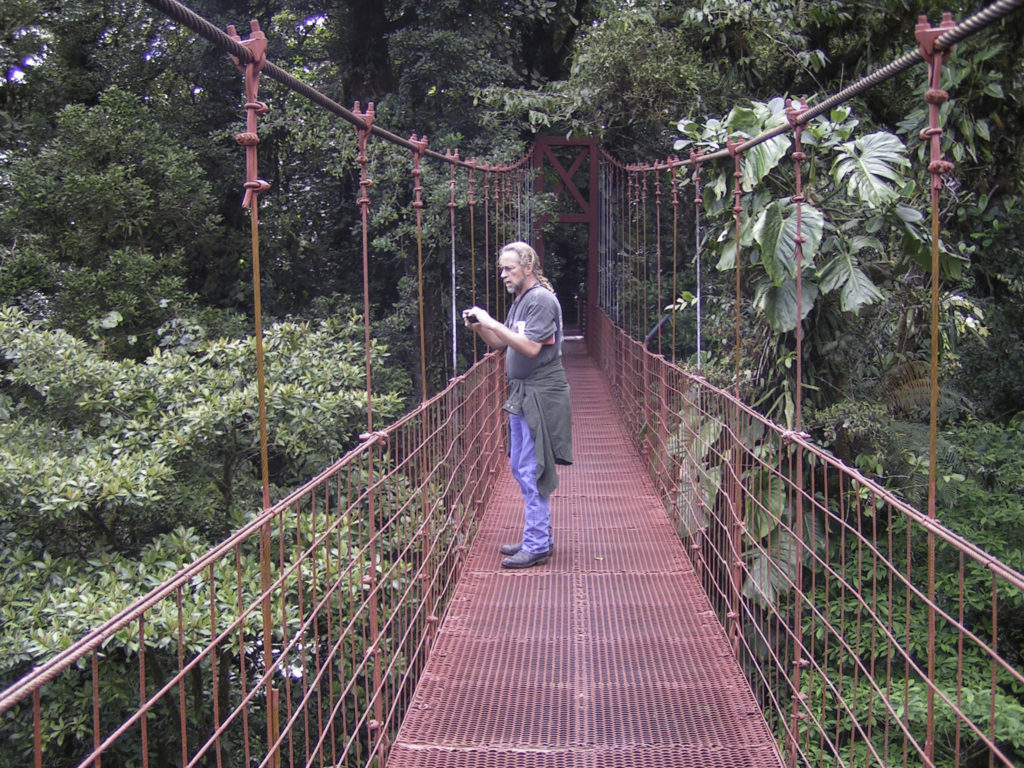
Bob on a High Bridge In the Monteverde Cloud Forest
We were growing sicker by the minute so we left the cloud forest and drove into Santa Elena and purchased some cold medicine. In Costa Rica, over-the-counter medicine may be much stronger that what is available without a prescription in the States. We had lunch at the Tree House Restaurant in a dining area built amid the branches of a huge fig tree. We returned to Fonda Vela, crawled into bed, took our powerful pills, and slept on and off for about sixteen hours in our lovely room.

Monday, January 2nd
Our long rest had done us some good, so we headed out of Santa Elena and north to Laguna Arenal. We passed many coffee plantations and saw typical above-ground cemeteries with their tiled graves. We stopped at the Sunset Grill in Nuevo Arenal and met some of the many US expatriates who have settled in this beautiful lake area. After speaking Spanish for almost a week it was nice to talk in English!
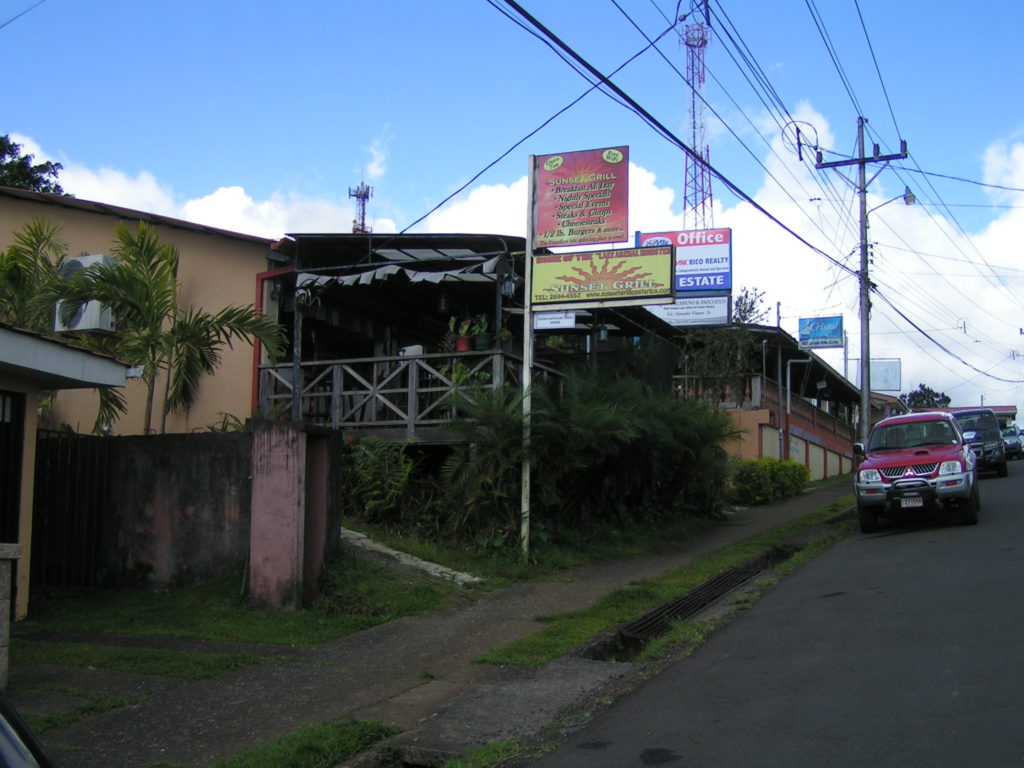
Sunset Grill 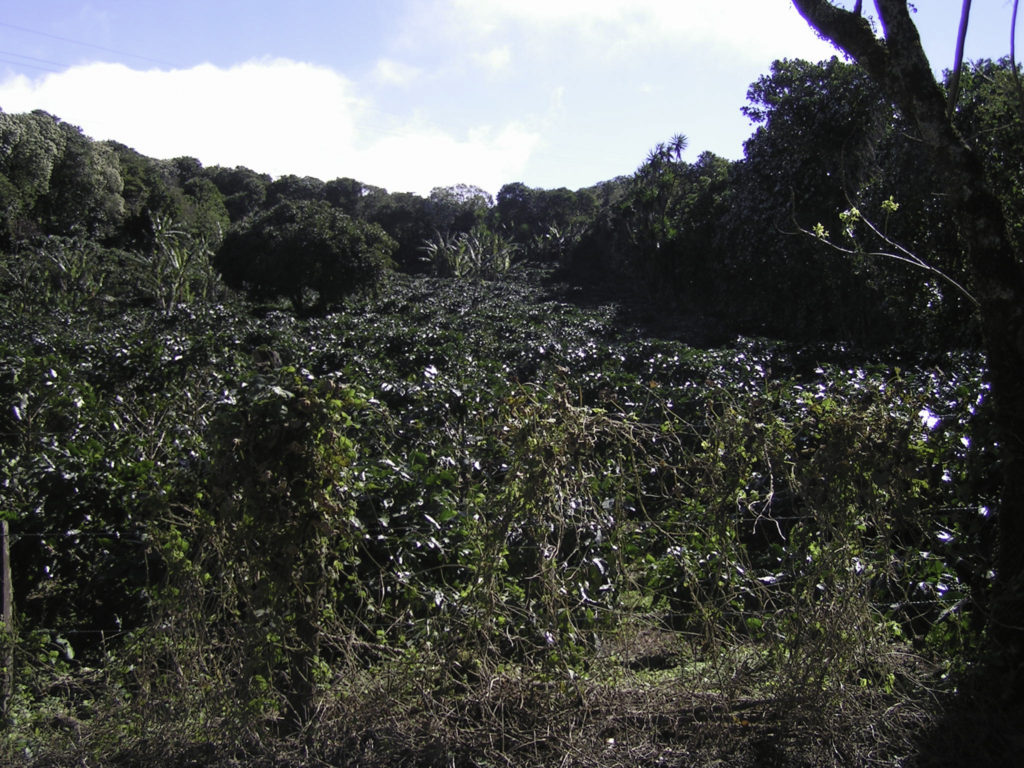
Coffee Plantation 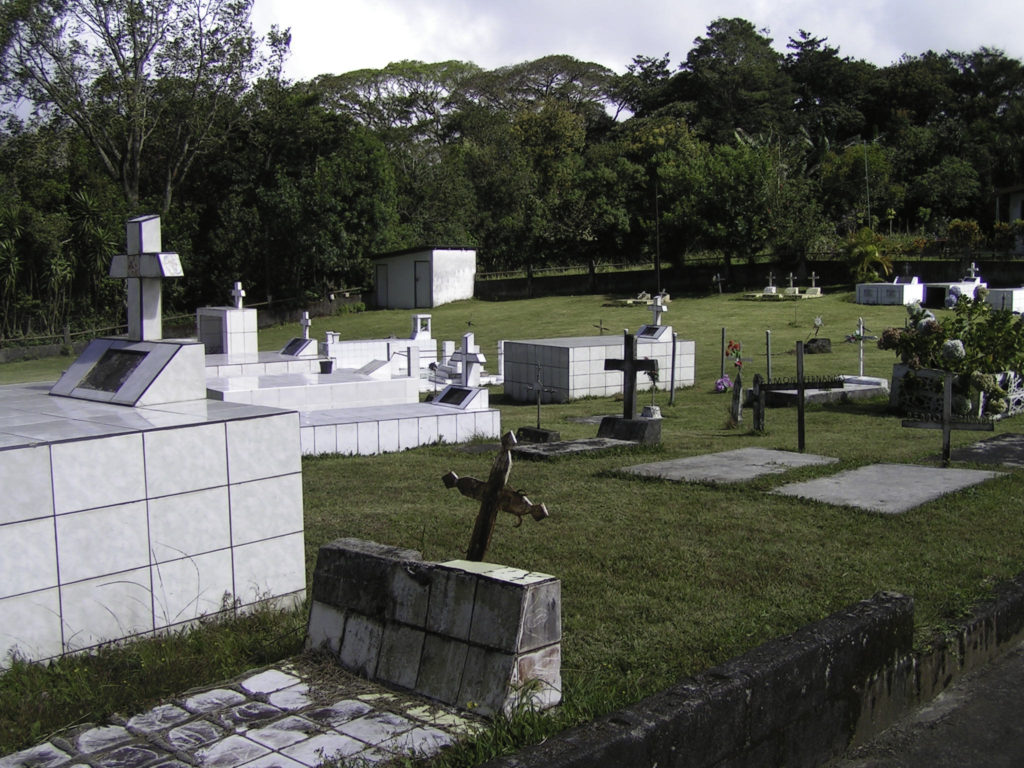
Typical Cemetery
We were on our way again, heading to Los Chiles to stay with another of Bob’s friends, Oscar. Along the way we spotted a Coatimundi (another member of the raccoon family) and saw Volcan Arenal (one of many active volcanoes). Tropical flowers grew everywhere and the landscape looked like a gorgeous park.
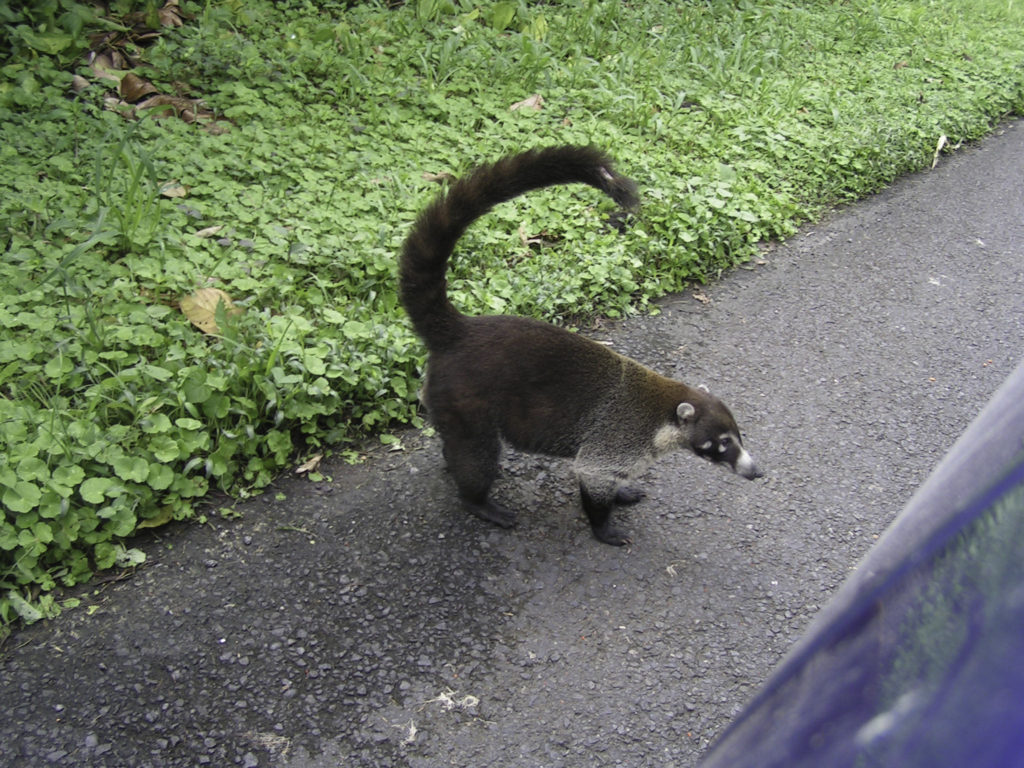
Coatimundi 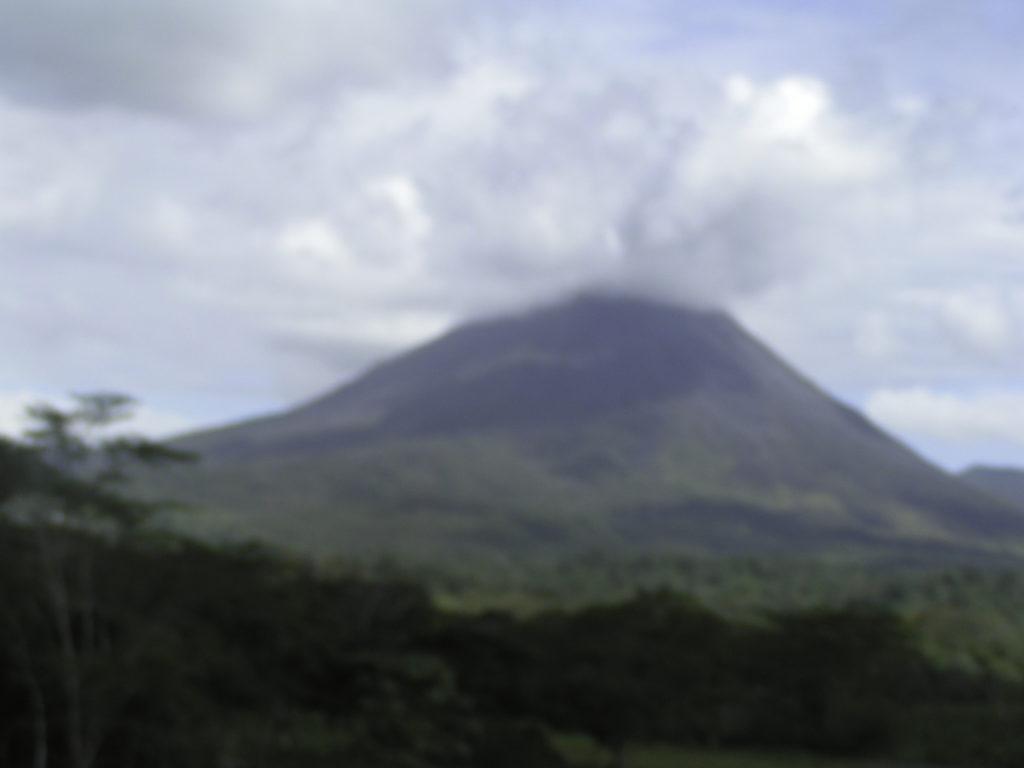
Volcan Arenal 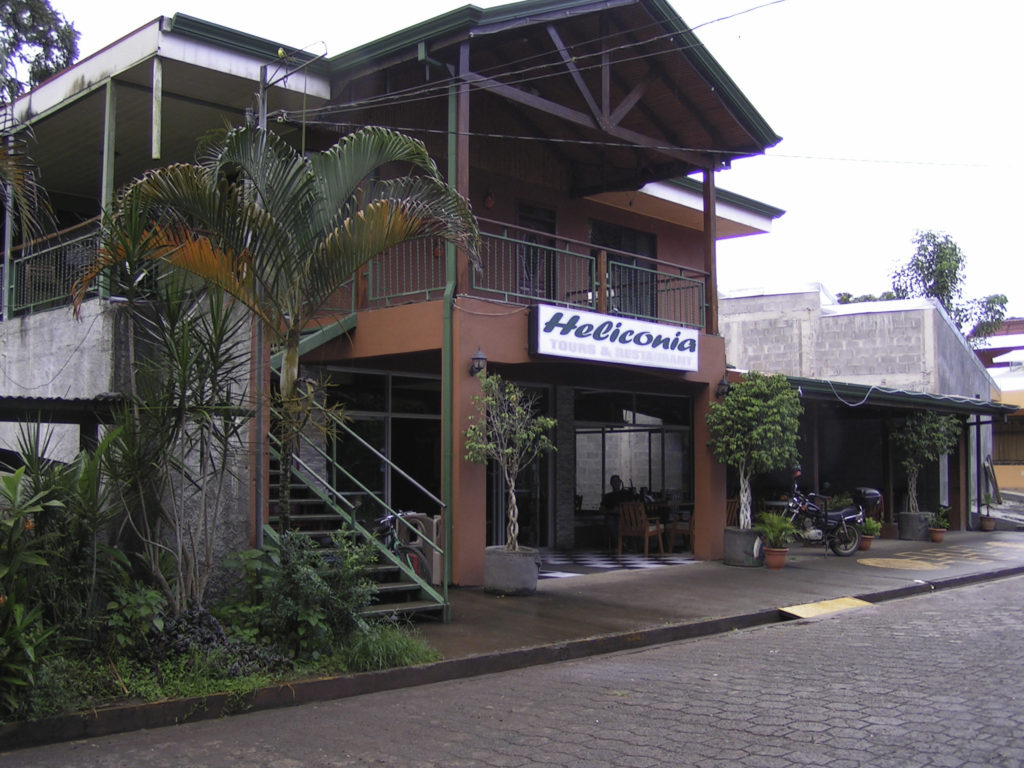
Heliconia Restaurant
We arrived in Los Chiles in the late afternoon. Los Chiles is mid-way between the Atlantic and the Pacific just a few miles from the Nicaraguan border. Oscar Fernando Rojas Esquivel made us warmly welcome at the Heliconia Tours and Restaurant close to the Rio Frio. We had a good dinner and were offered a small room for the night at a nearby location. We enjoyed a good night’s sleep.

Tuesday, January 3rd
Just after sunrise, Oscar’s son Gary took us up the Rio Frio with the help of a friend. This area of Costa Rica is known for its rainy weather. This day was no exception and were quickly drenched as we huddled under plastic sheets in the small boat. Just as I wanted to call it quits the rain stopped and the wild beauty of the river was revealed. The Anhinga (called a snake bird by the locals) were plentiful. They fish underwater and when their heads are above the surface they look like a water snake. We also saw many of the tall, white Great Egret and we were lucky to spot the smaller Tri-colored Heron.
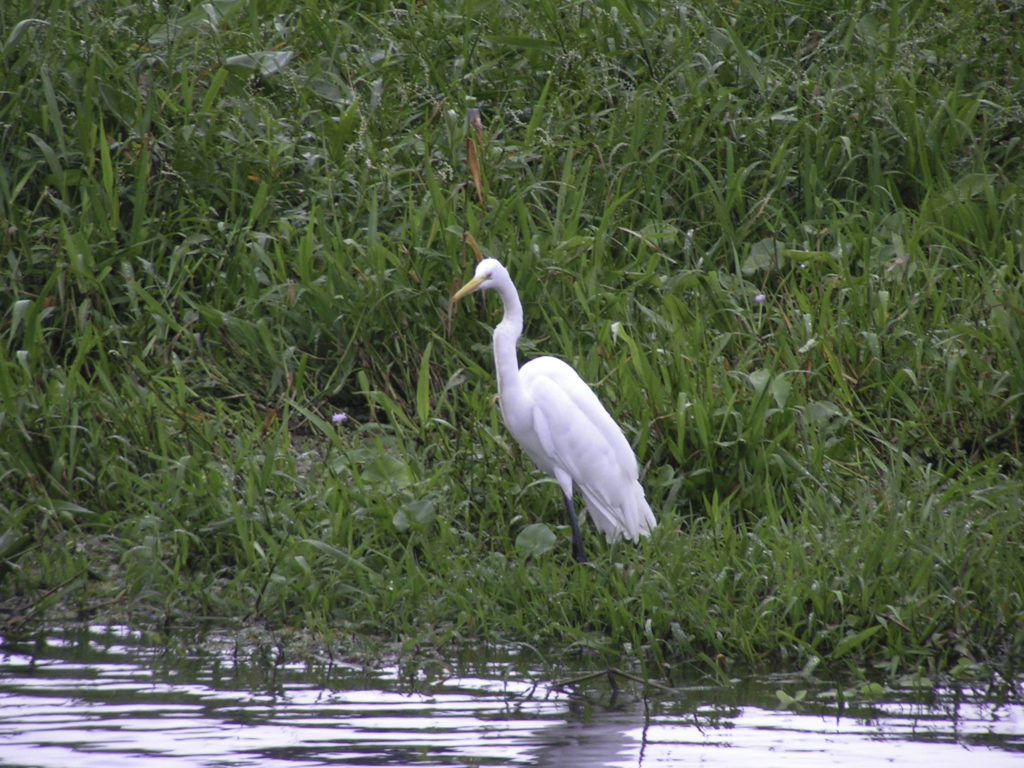
Great Egret 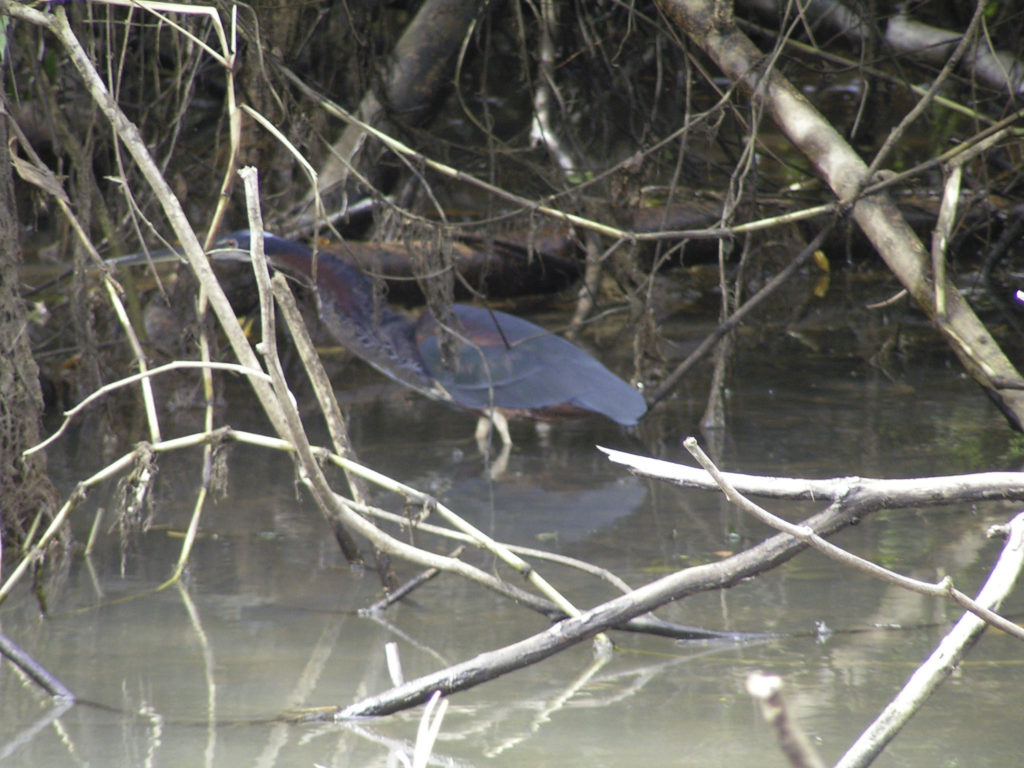
Tri-colored Heron 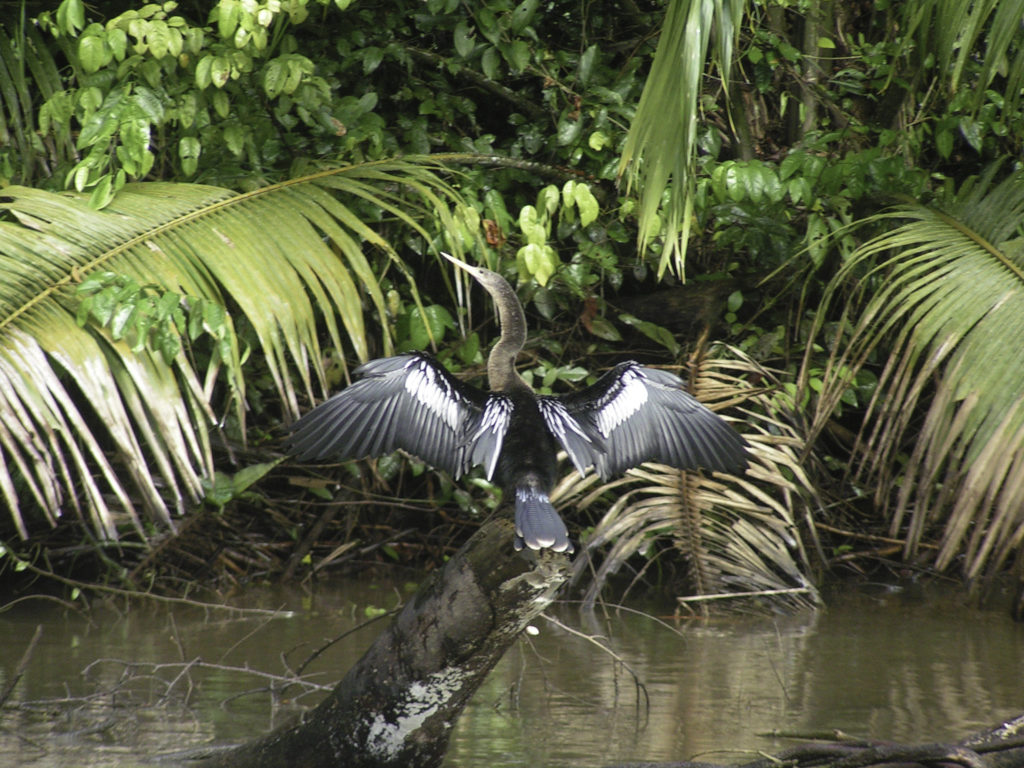
Anhinga or Snake Bird
Gary was a fantastic tour guide who possessed an extensive knowledge of the river and her creatures. We saw plenty of Camen, but with no saltwater in this non-costal river, no crocs live here. The plentiful Iguana climb to the highest points of the trees. The Howler and Spider monkeys were fun to watch.
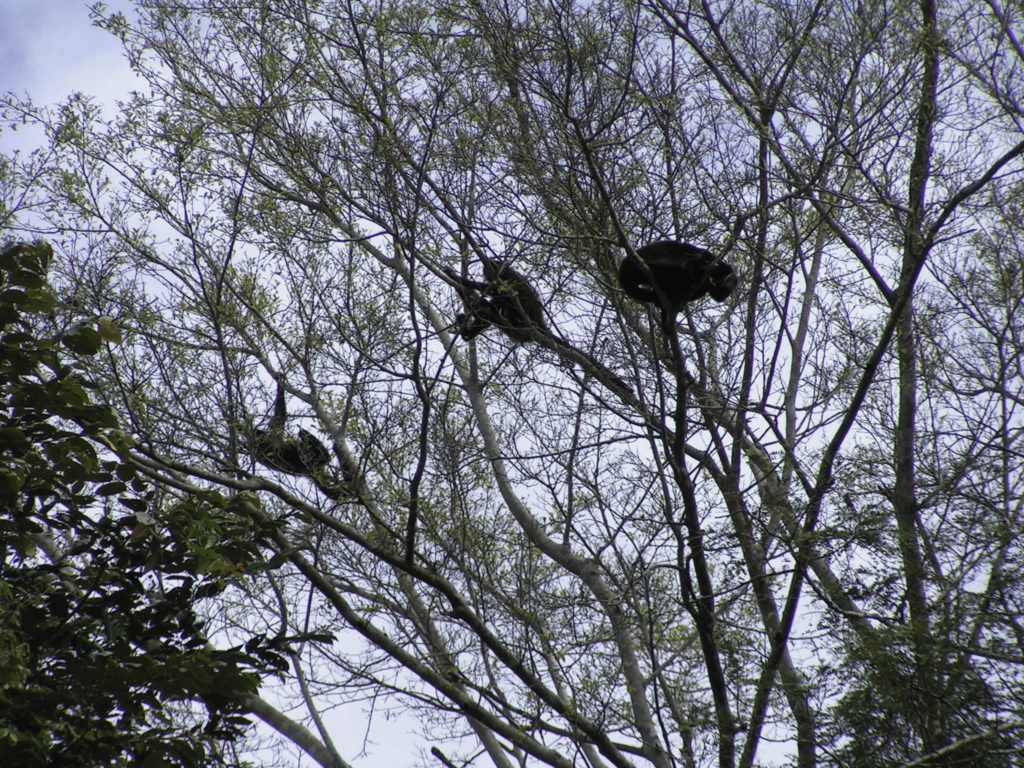
Howler Monkeys 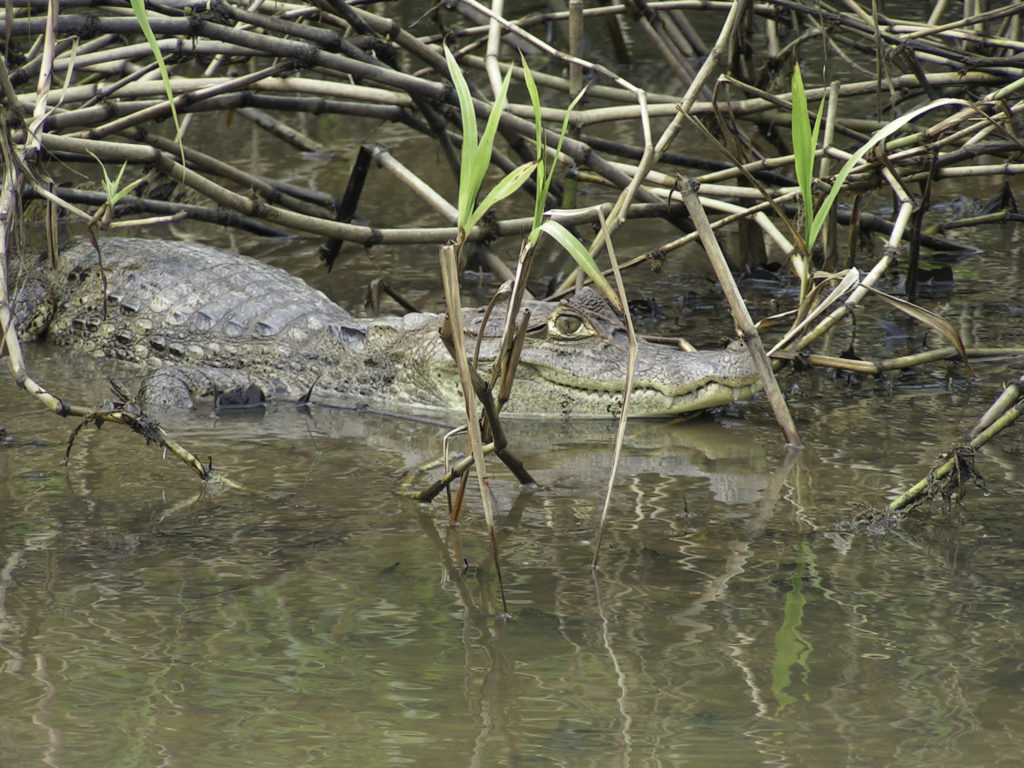
Camen 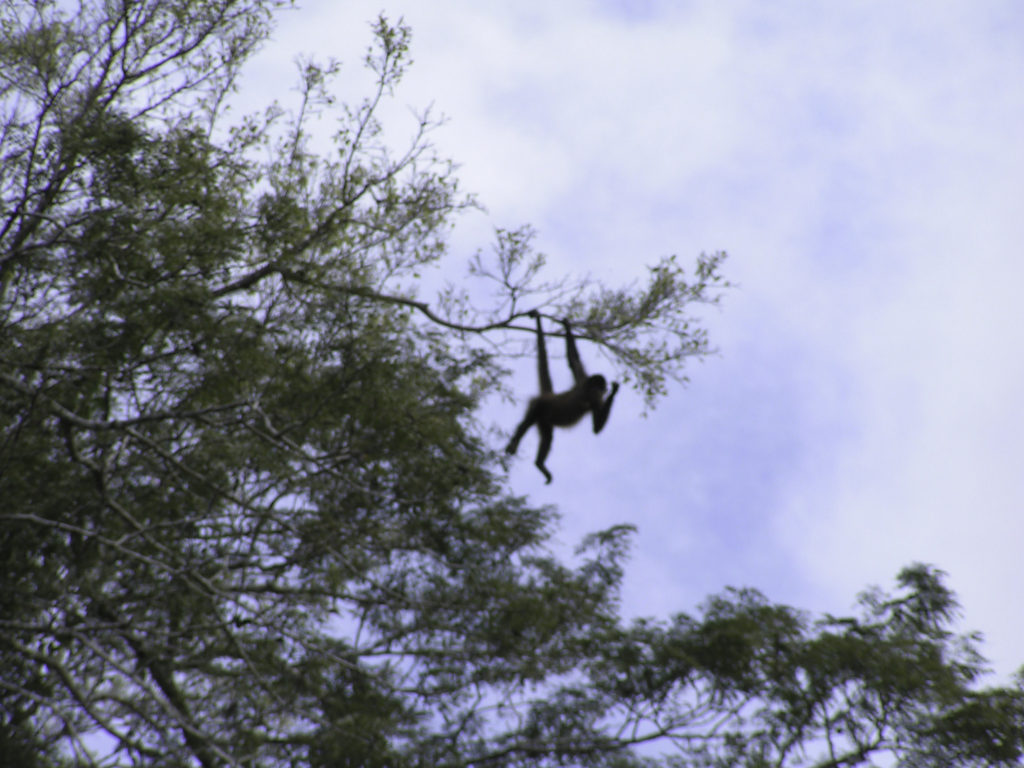
Spider Monkey Showing Off 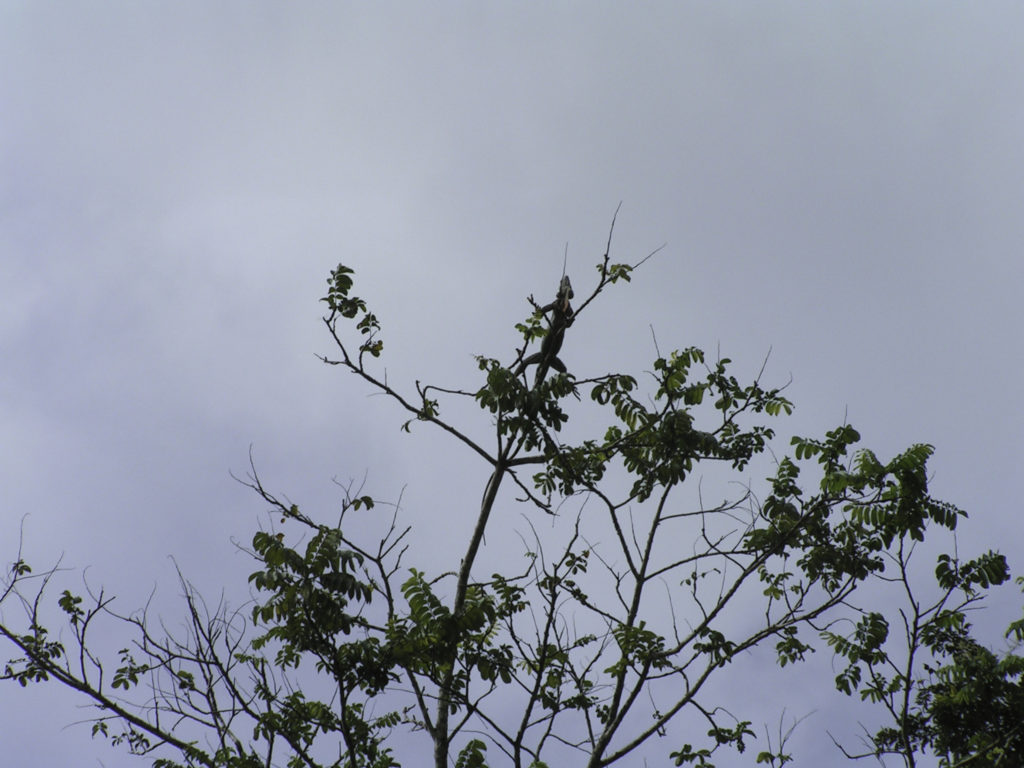
Iguana in the Treetops 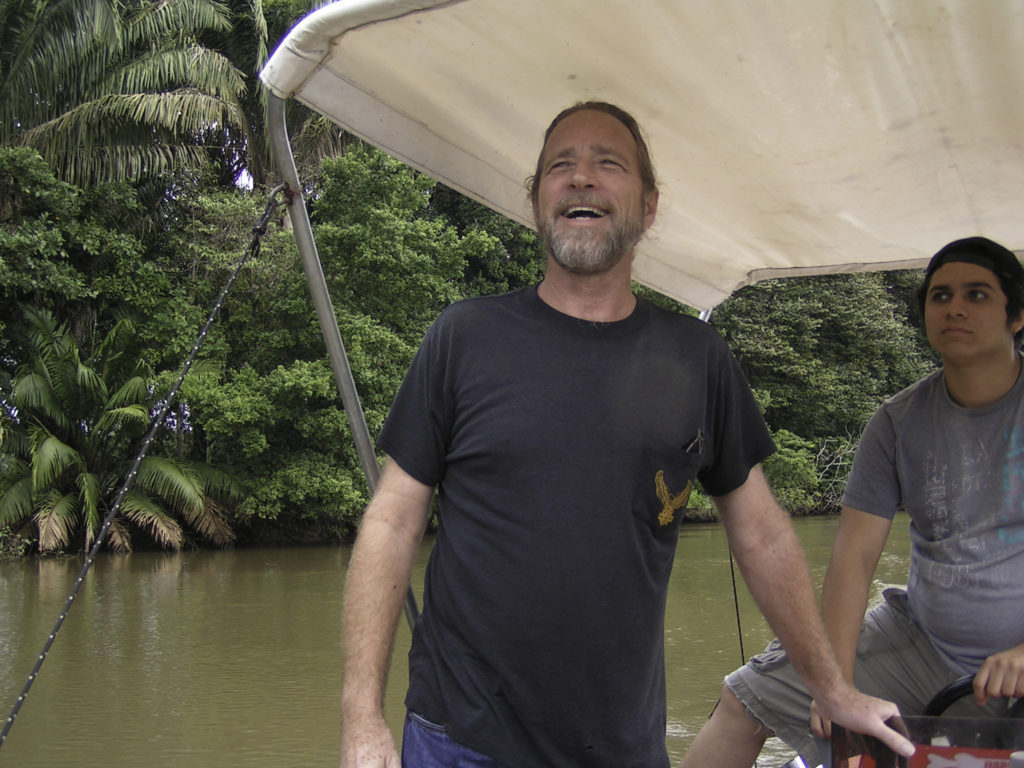
Bob and Our Guide Fishing the Rio Frio
We left Los Chiles at mid-day and headed west through the Cano Negro National Wildlife Refuge, which runs along the Nicaraguan border. We had been told that the road did not go through unless you had a really good four-wheel-drive vehicle, but we decided that our car could handle anything after what we had put it through. We were glad that we took this route, because it turned out to be one of the most fantastic birding areas we had seen to date. In these vast wetlands we saw many cool birds.
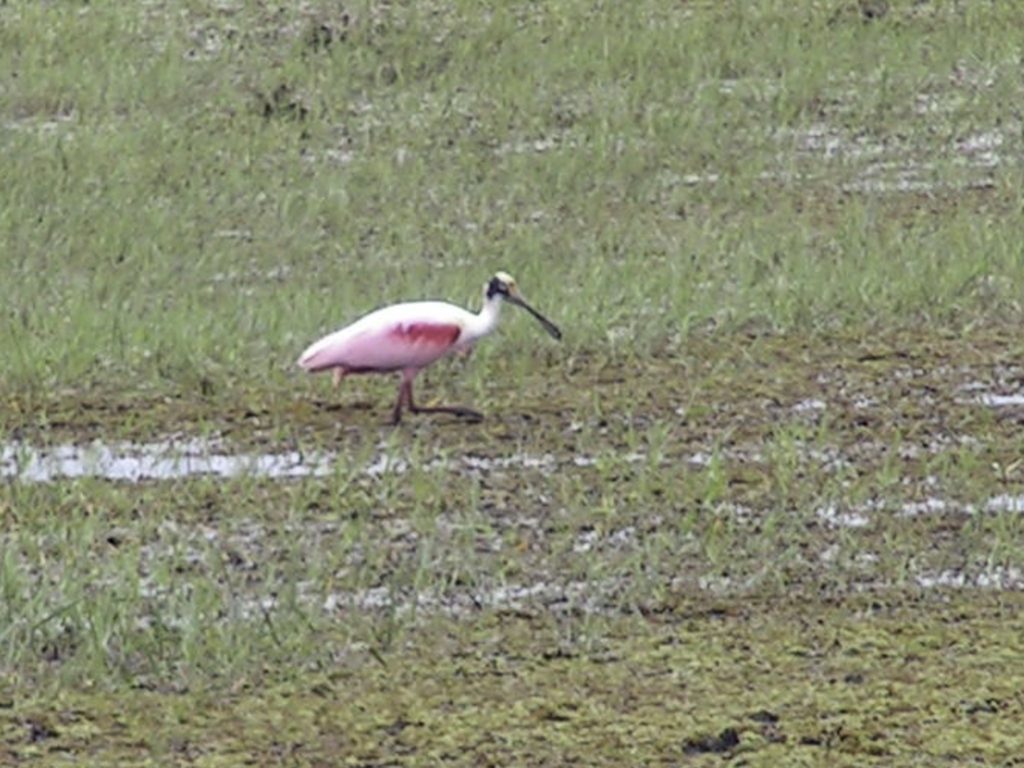
Rosette Spoonbill 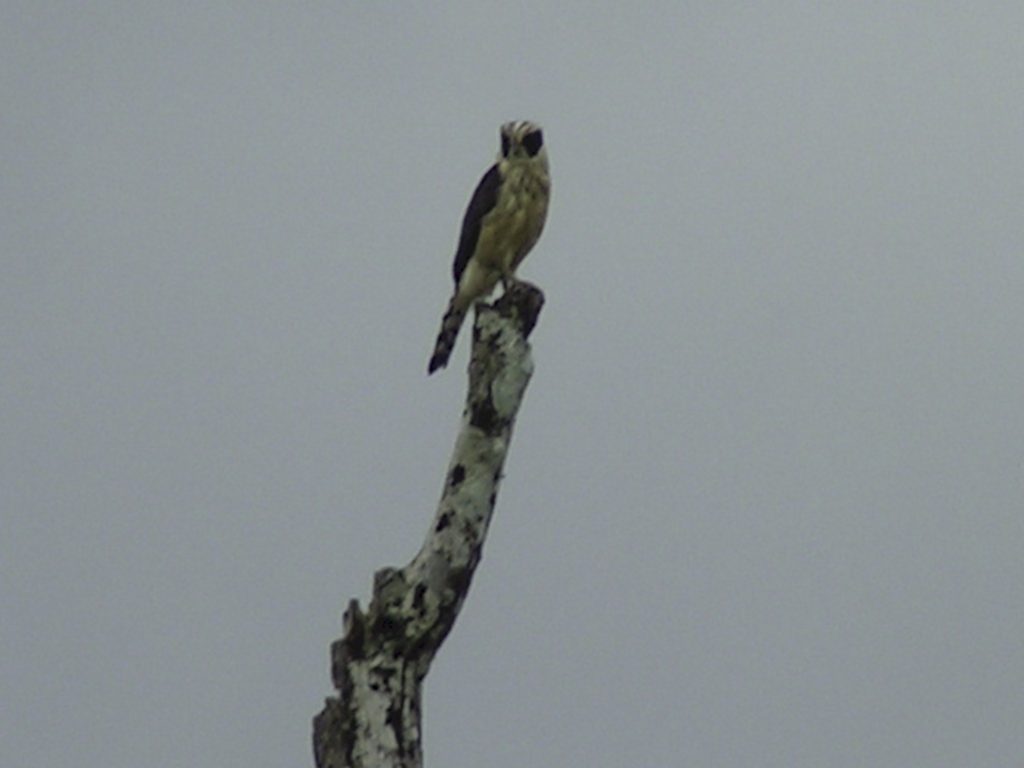
Laughing Falcon
We were fascinated by the fences we saw all over Costa Rica. The bare-root twigs are planted tightly together in a row and quickly grow into trees. This natural fence is not only effective, but very beautiful if properly maintained. At the western end of the Cano Negro area we began to see many farms, with pineapple a typical crop. We found most of the people in this area a bit less friendly than in other areas of Costa Rica. In fact, we were offered an occasional rude gesture by a few of the locals along the road.
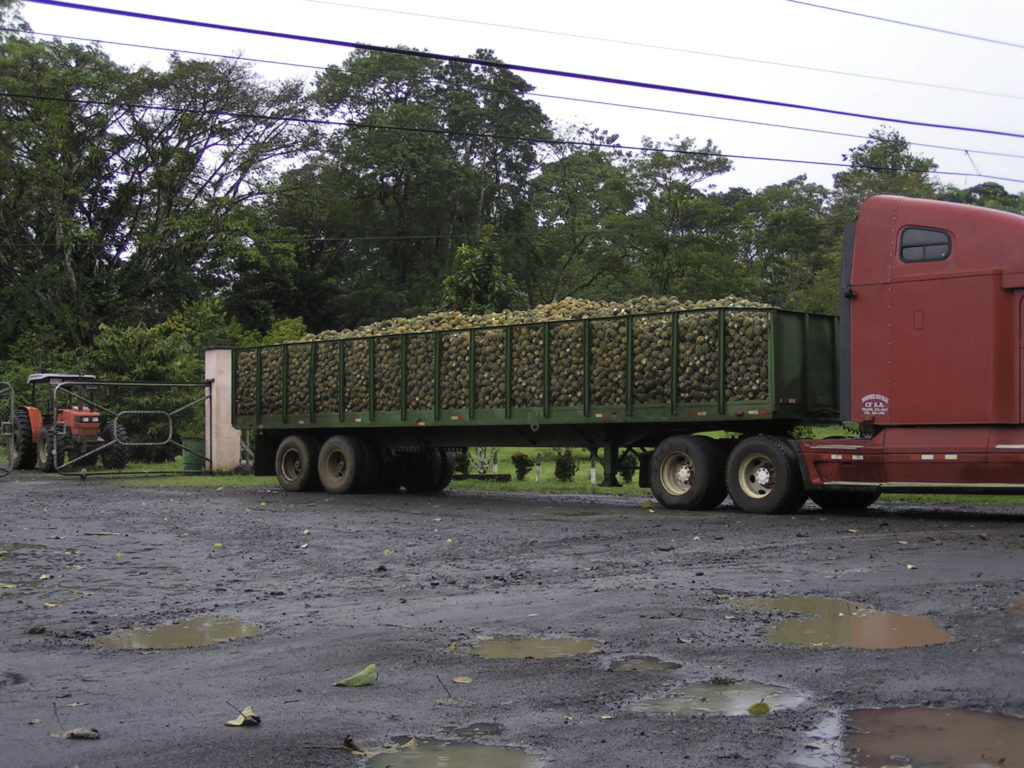
Pineapples 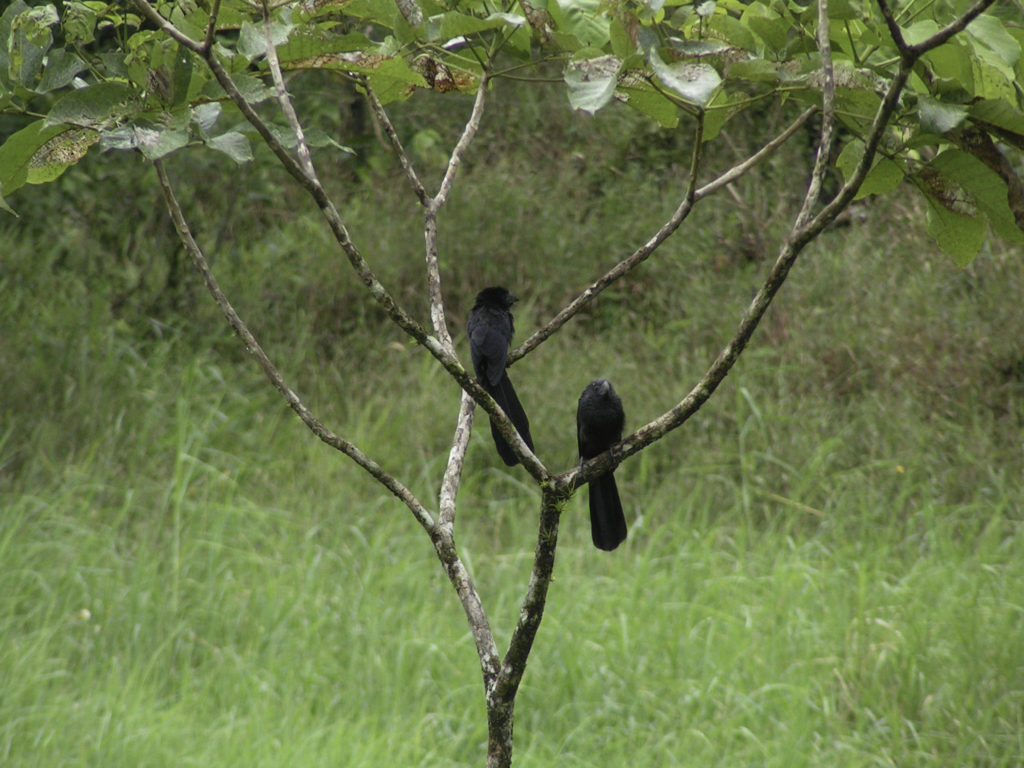
Grooved-bill Ani 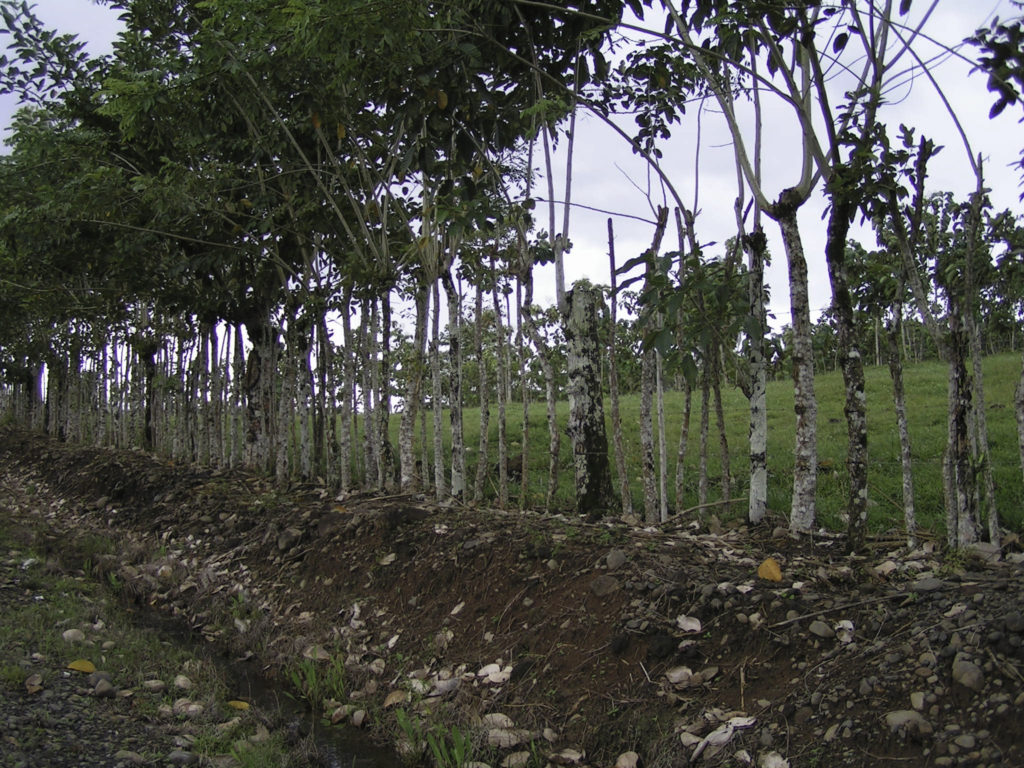
A Typical “Living Fence”
Towards sundown we had a wonderful experience. We had been traveling through miles of orange groves when we heard a noisy racket. We stopped the car and got out to marvel at the Magpie jays, Parrots, Caracara, and Oropendola as they flew back and forth across the road above our heads. We saw the Mealy Parrot, the Yellow-naped Parrot, and the Red-lored Parrot, as well as the Montezuma Oropendola.
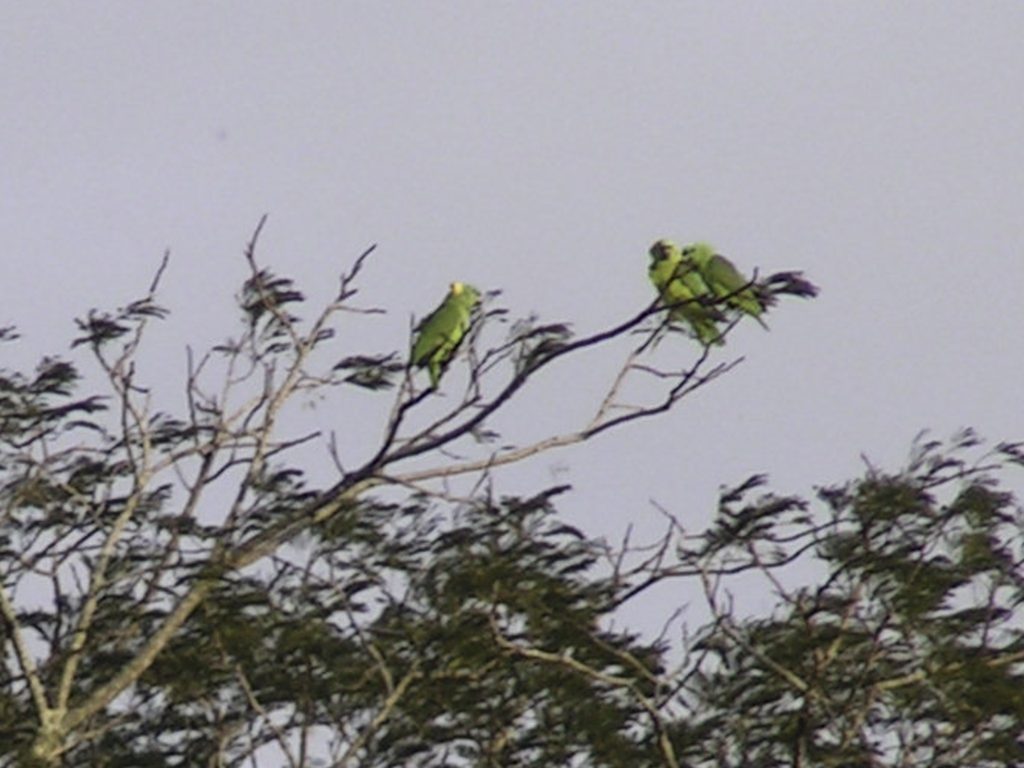
Parrots 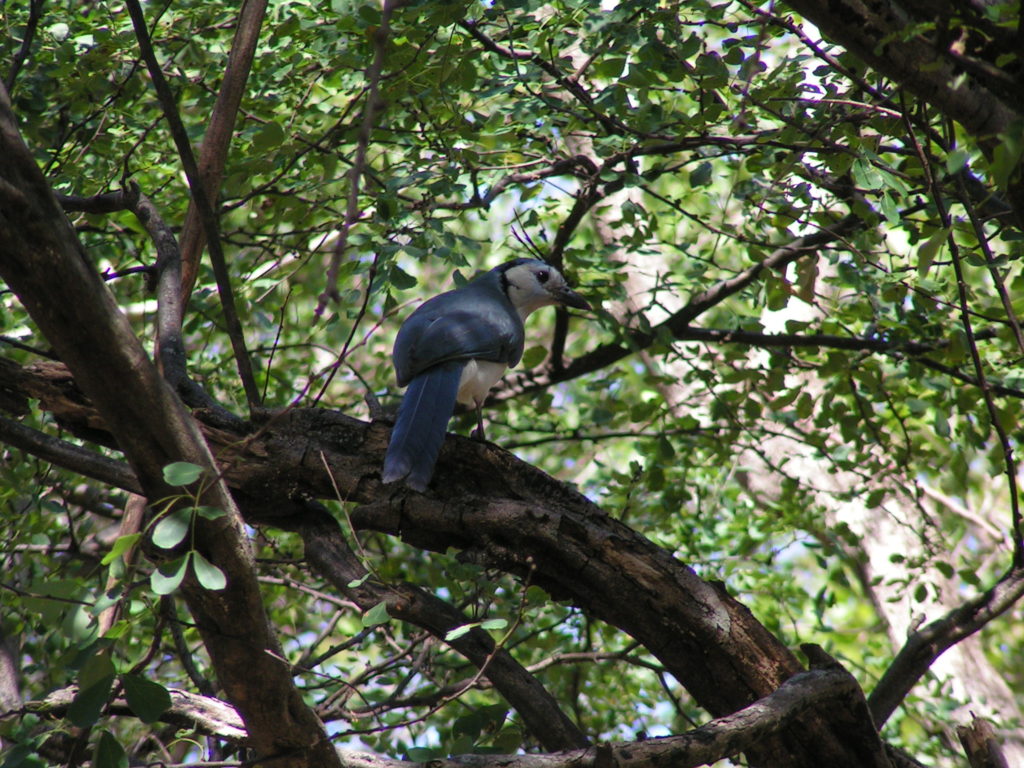
Magpie Jay 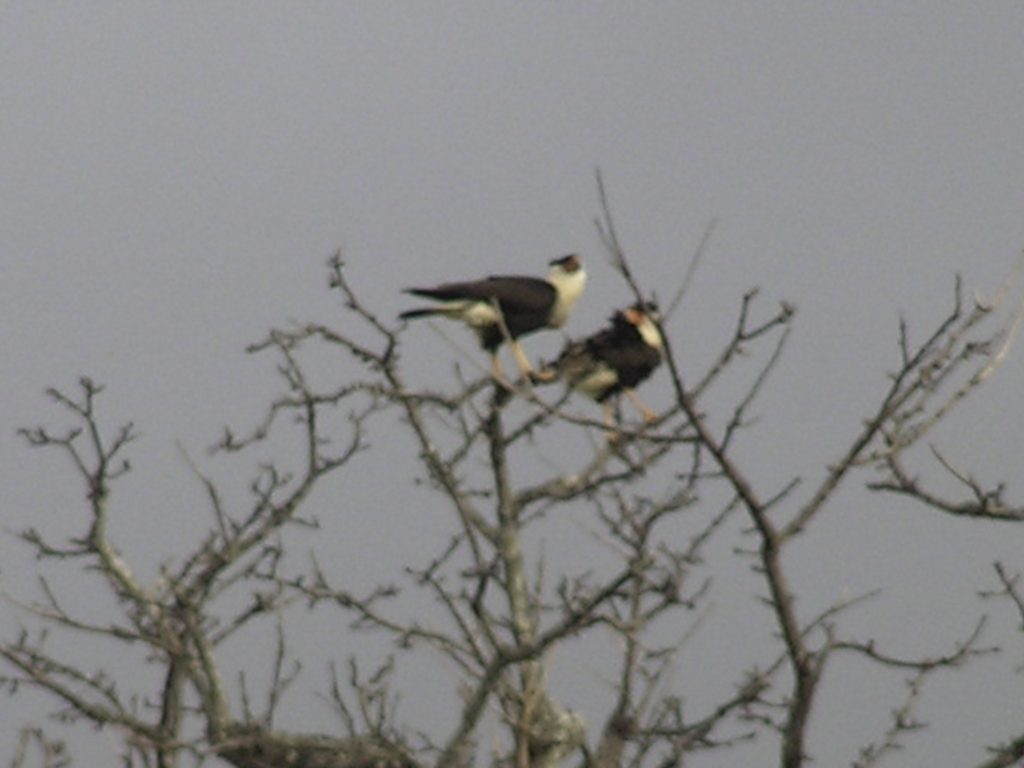
Crested Caracara 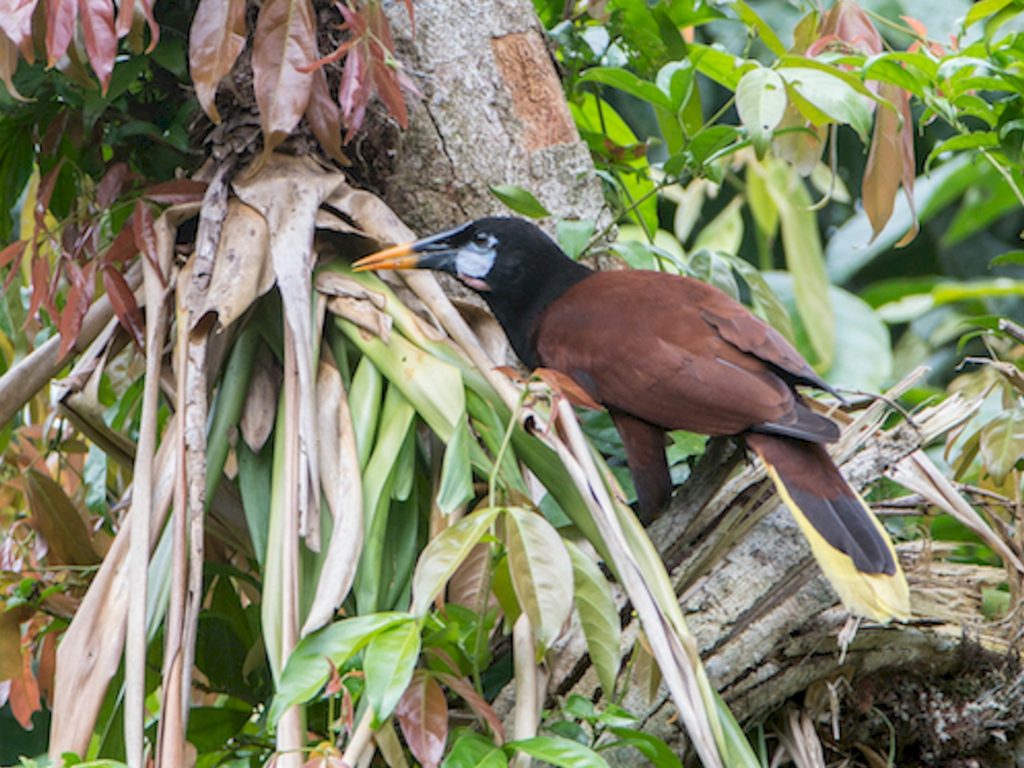
Montezuma Oropendola
We ended our days journey after reaching Highway 1 near the Pacific coast. We found no place to stay in this remote area, so we headed south to Liberia where we spent the night at a Best Western. It was here that we had the only bad meal we had eaten during the entire trip. However, the room was nice and we had a good night’s sleep. We also had a complementary breakfast.

Wednesday, January 4th
We left Liberia early and headed north. We had passed Santa Rosa National Park the previous evening and didn’t want to miss seeing the dry tropical forest; it’s so very different than the rest of the country. We saw some cool birds, but we were thrilled to see some of the parks elusive Capuchin (or white faced) Monkeys. We saw only two of them at separate times, both alone in the trees.
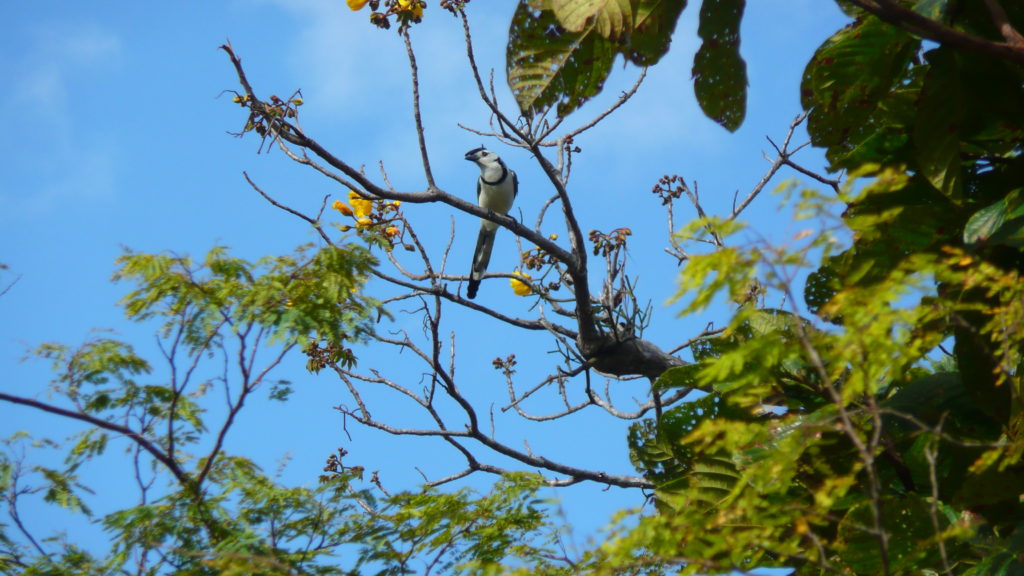
Magpie Jay 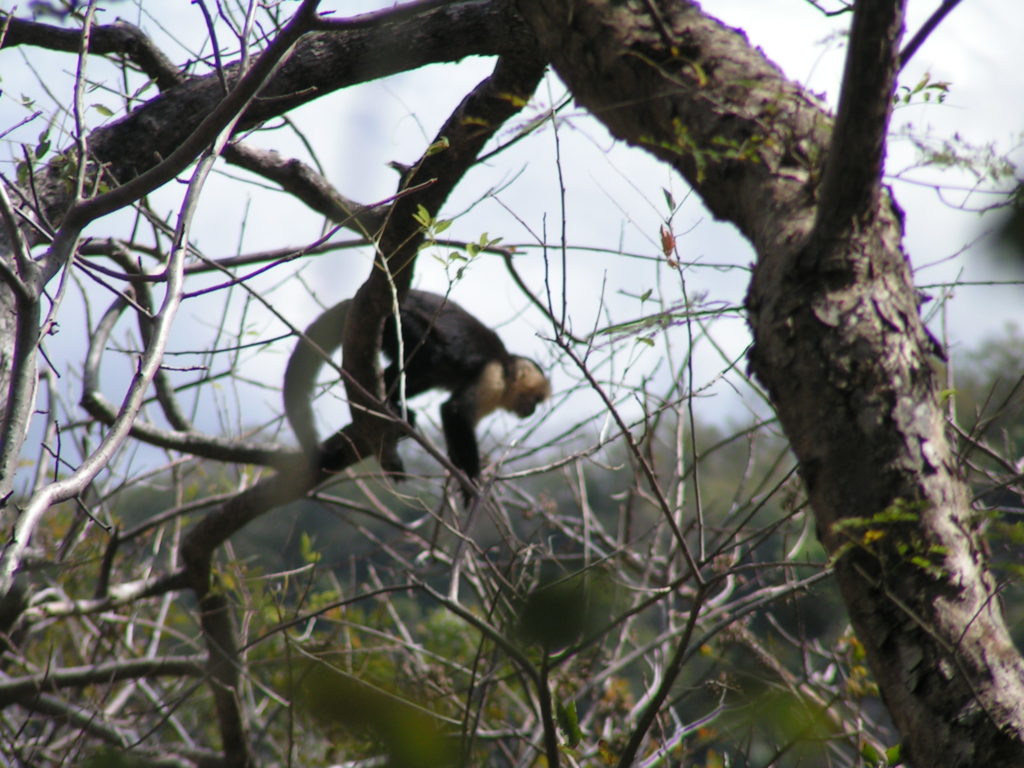
Capuchin Monkey 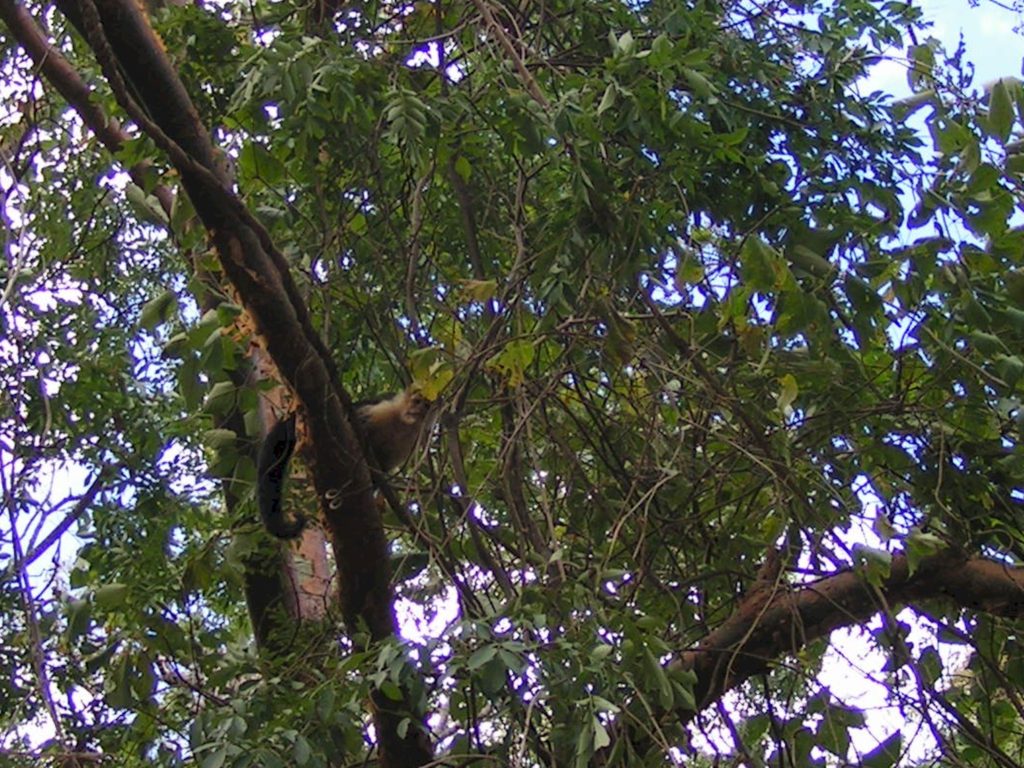
Capuchin Monkey
The road to the furthest point of Santa Rosa leads to Playa Blanca; it was one of the worst roads we had encountered. It was amazing that our little car made it through the rock-filled rivers to the end of the drive, but the beautiful park was worth the bumpy ride. The Iguanas were huge and plentiful.
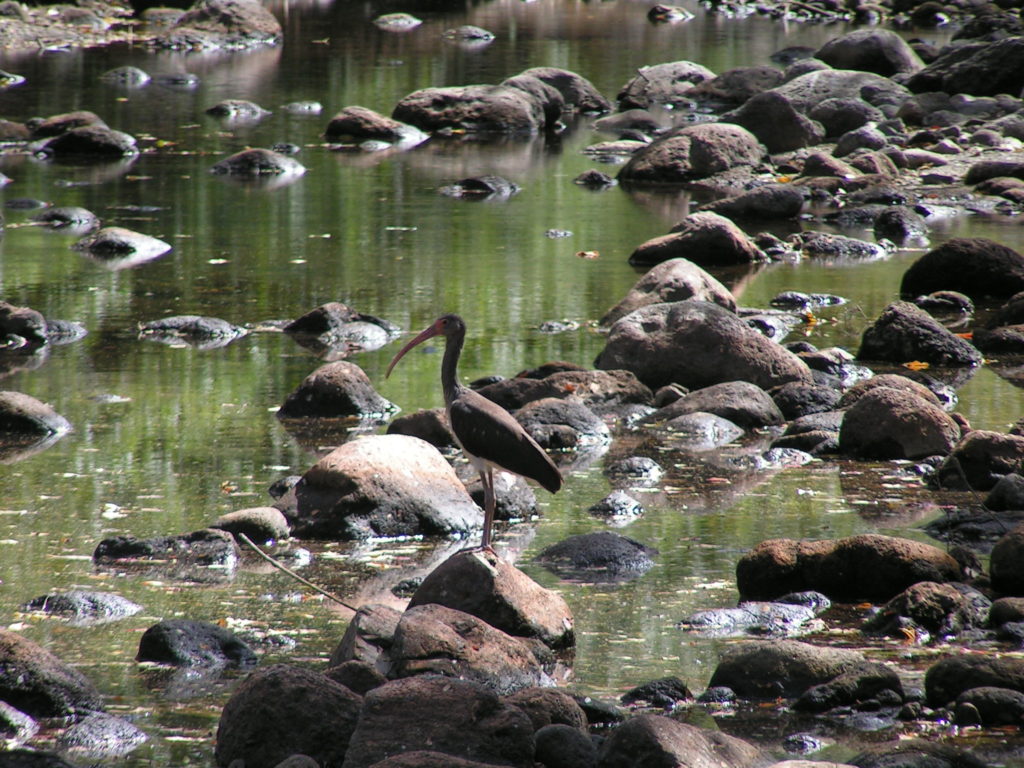
Juvinile White Ibis 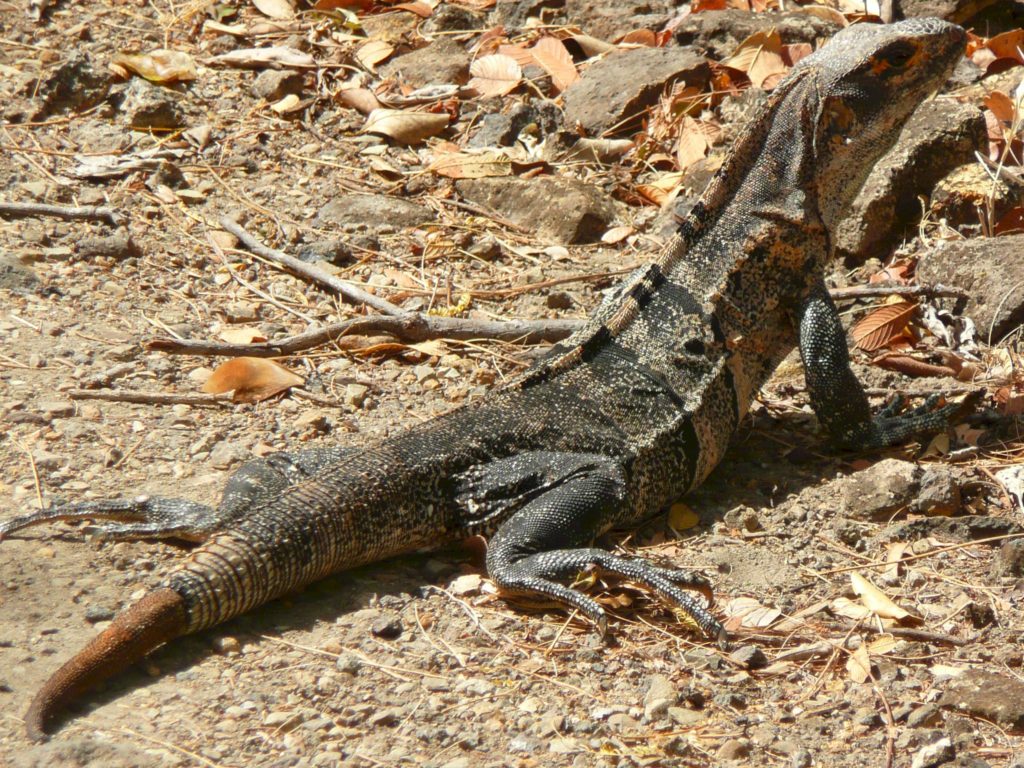
Iguana 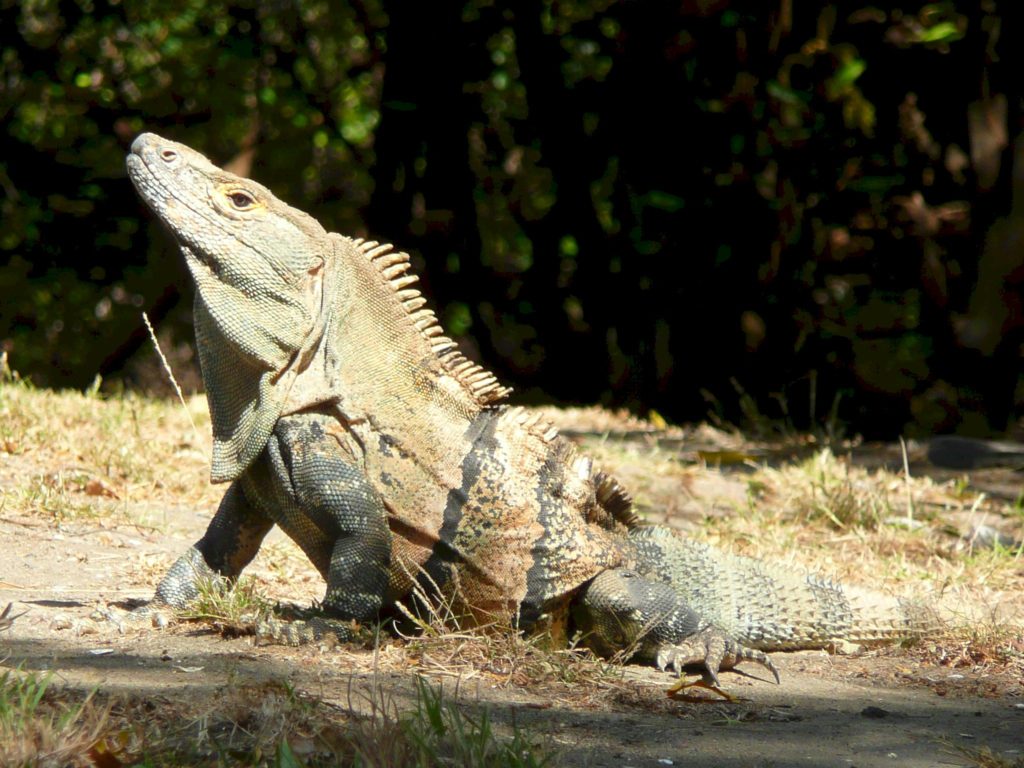
A Huge Iguana
We headed south to the Peninsula de Nicoya. This region is about three times as large as the Osa and densely populated. We were told that the Playa Tamarindo was a very popular beach, so we decided to check it out. Along the way we spotted a troop of howlers crossing the busy road on power lines. The females and juveniles went first, followed by the alpha male. He was not happy when we got out of the car to take photos. I was worried that the monkeys would be electrocuted, but a local told us that the wires are insulated to prevent this from happening.
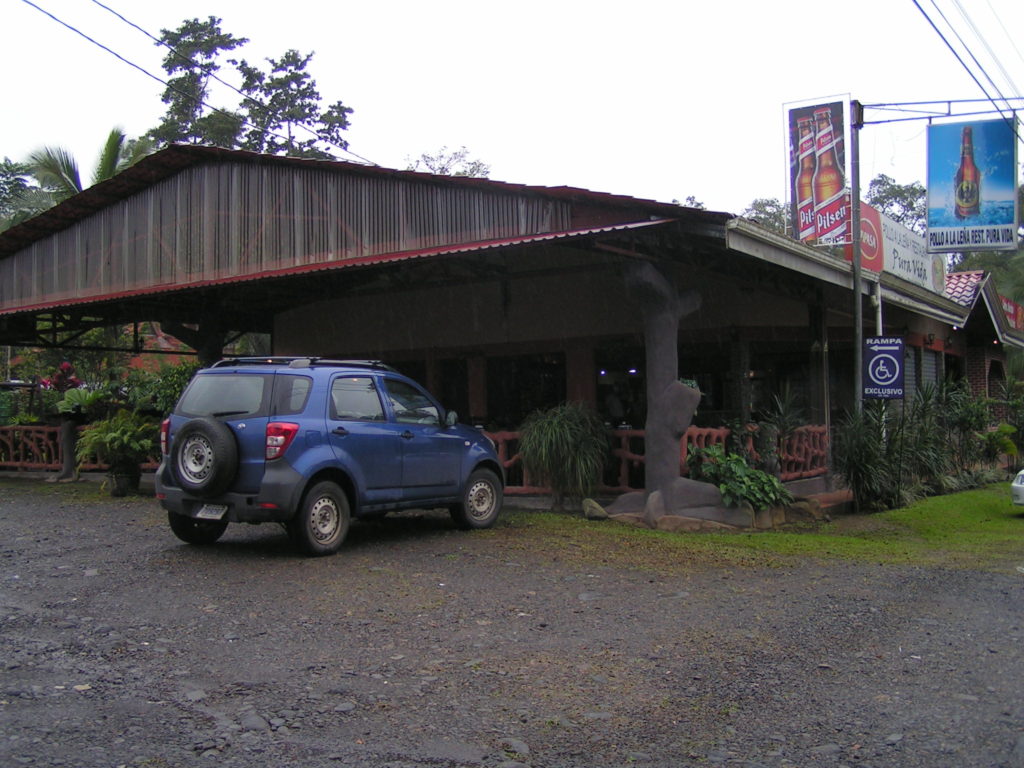
Roadside Diner 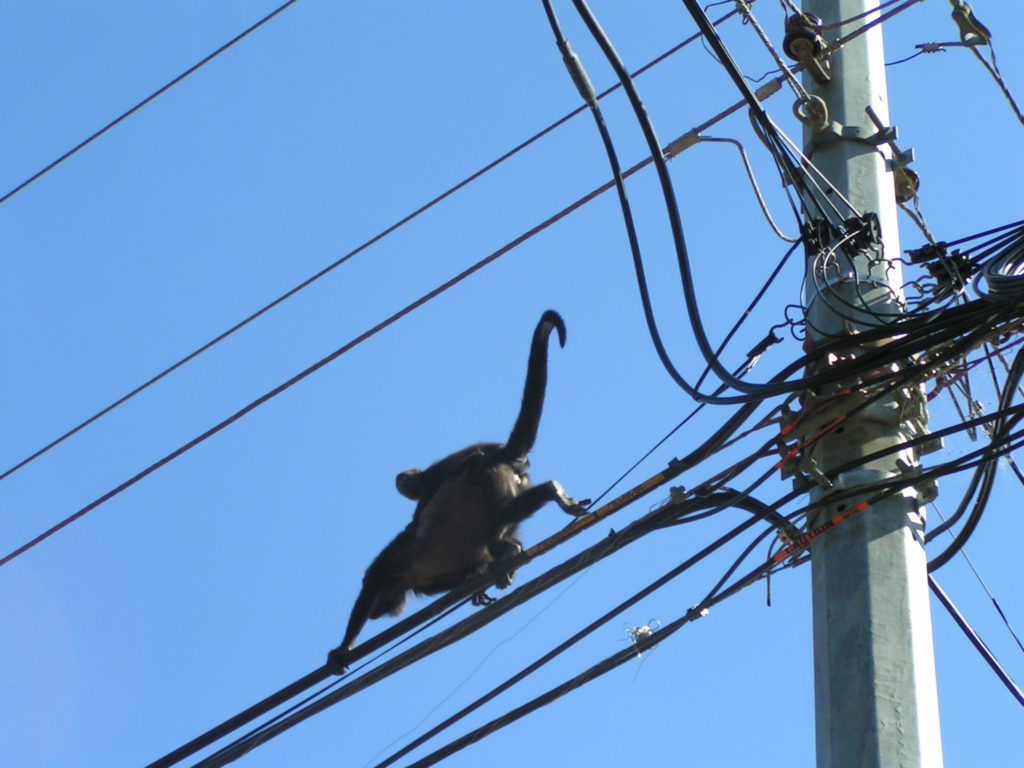
Howler Monkeys on the Powerlines 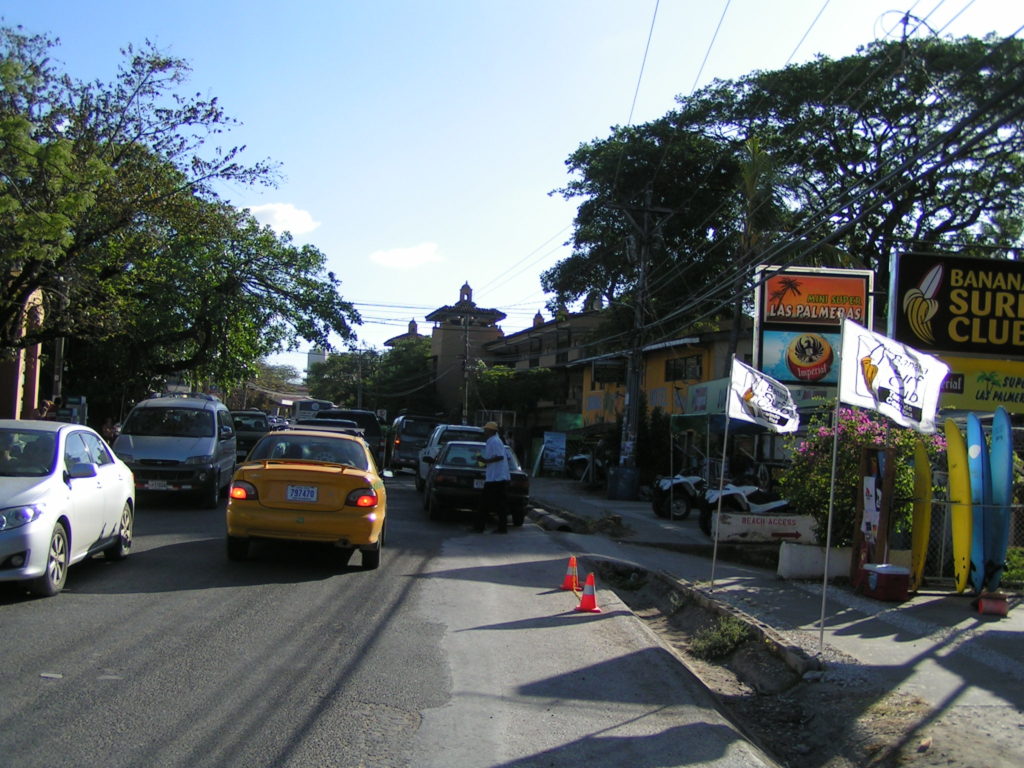
Crowded Tamarindo

Thursday, January 5th
I wanted to see Costa Rica’s Caribbean coast, so against Bob’s advice to skip it, we drove over the central mountain range to the Atlantic side. The area was flooded with the constant rain and the crowded toll highway was not a pleasant drive. My first glimpse of the Atlantic Ocean was in Limon, a busy, gritty port town filled with miles of shipping containers and processing facilities. We drove several miles south from Limon down the Atlantic coast road, but the cold and rain was not appealing.
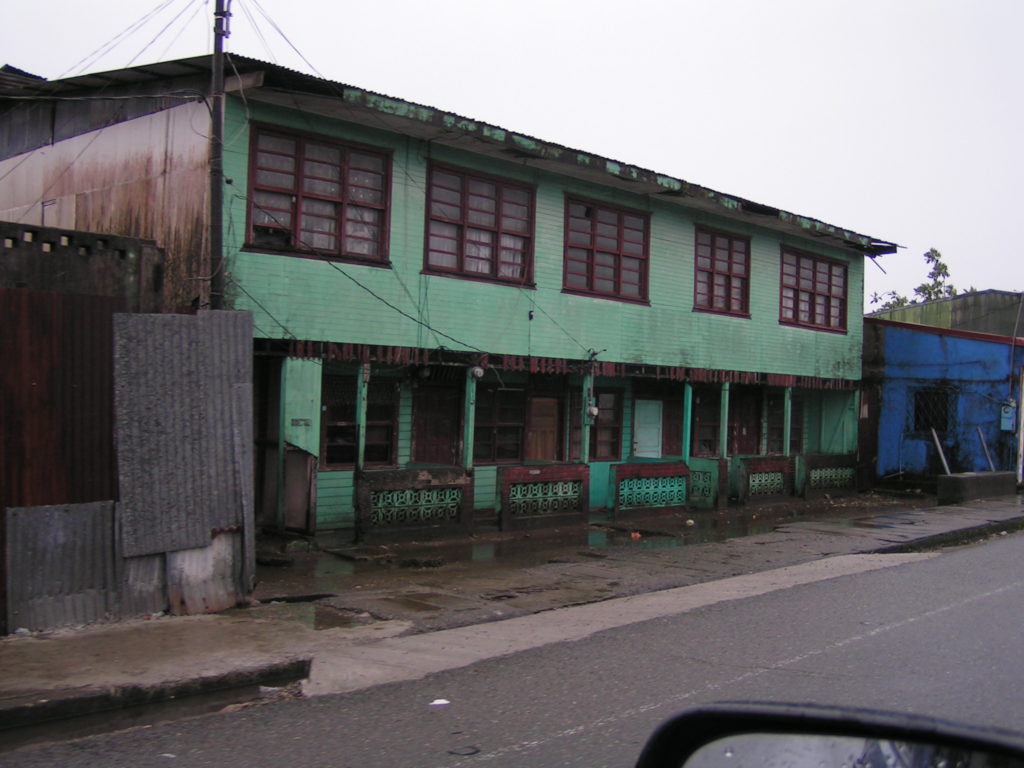
Streets of Limon 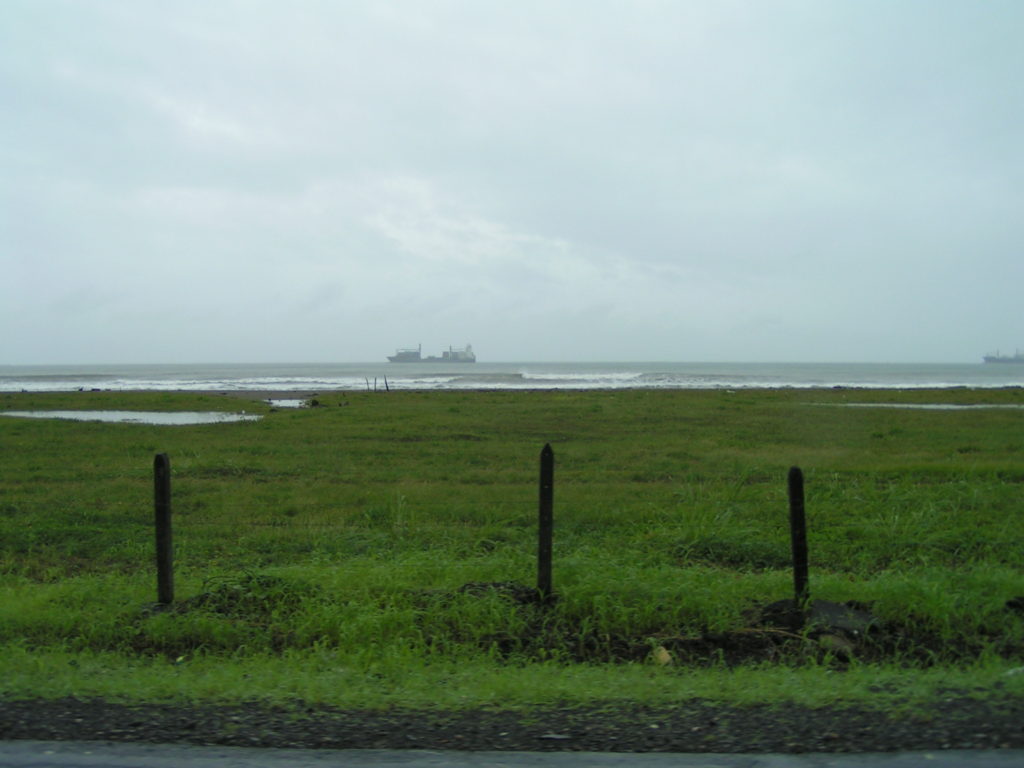
The Carribean Atlantic Ocean 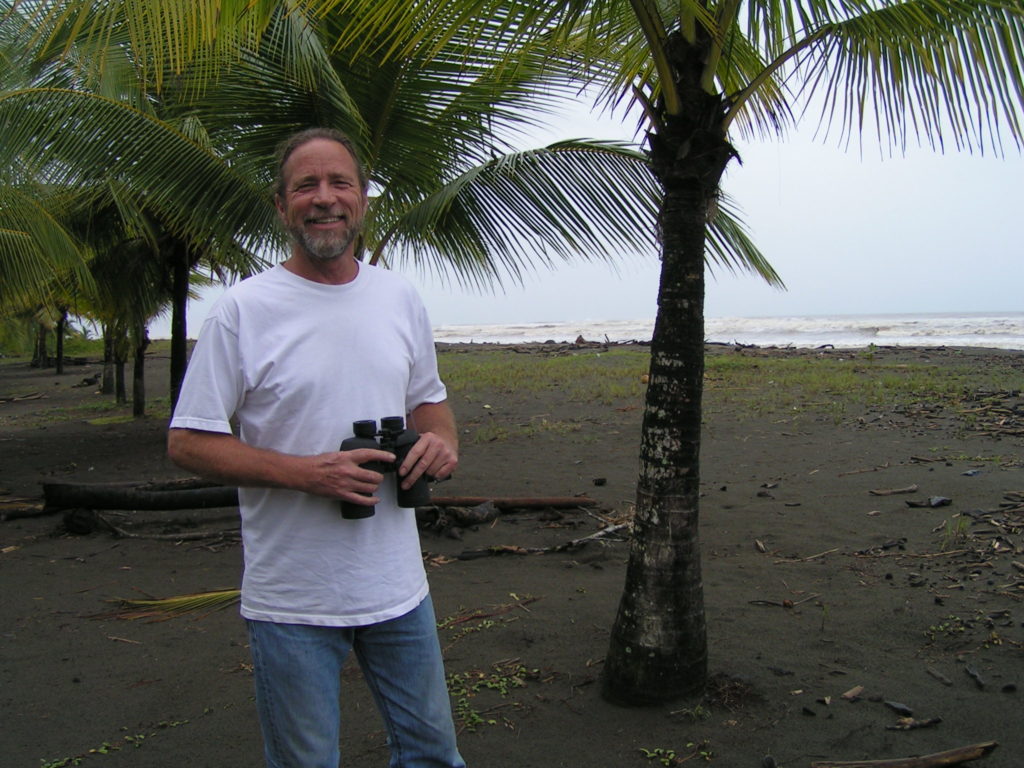
Bob Looking for Birds at the Atlantic Shore 
Coastal Hawk 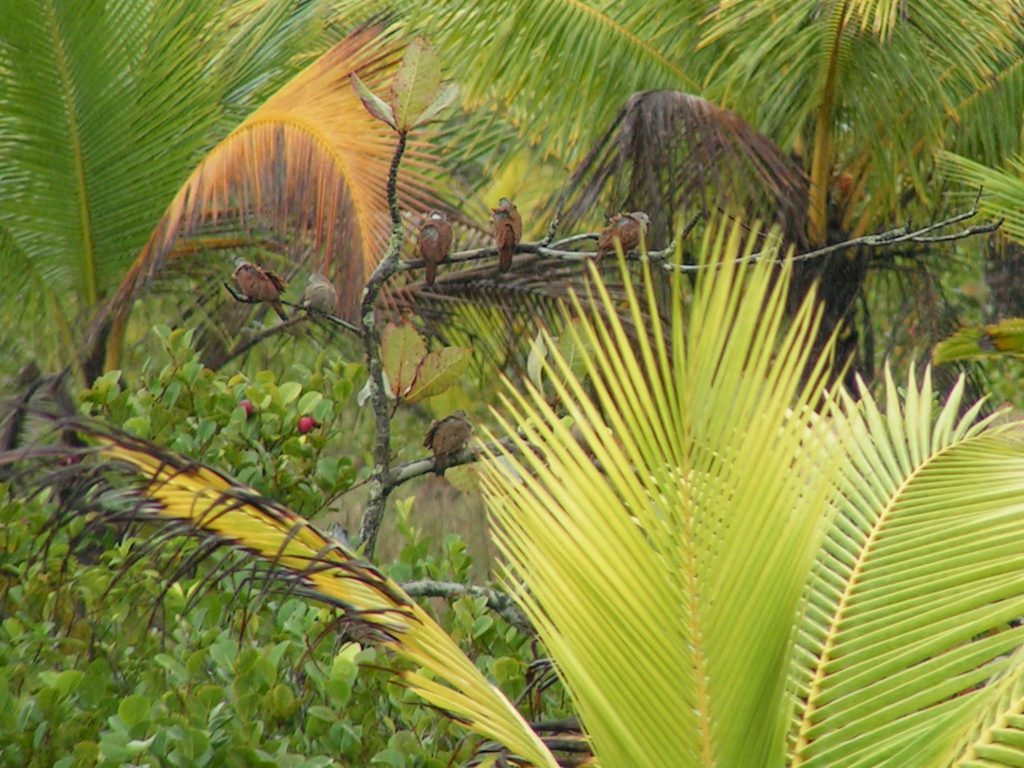
Ground Doves
I had to admit that Bob was right; the Caribbean side of Costa Rica was not so delightful, but I had stuck my finger in the chilly Atlantic, so I now had two oceans under my belt. We headed back into the mountains, but turned south at Siquirres to follow the twisting turns of the central highland highway. We found that the chilly wet weather had followed us into the mountains, but we didn’t mind (we’re from the Pacific Northwest, after all). We drove past many highland coffee plantations and an occasional small city. It was so nice to have a navigation system that more or less kept us on track as we maneuvered through the chaotic unmarked city streets.
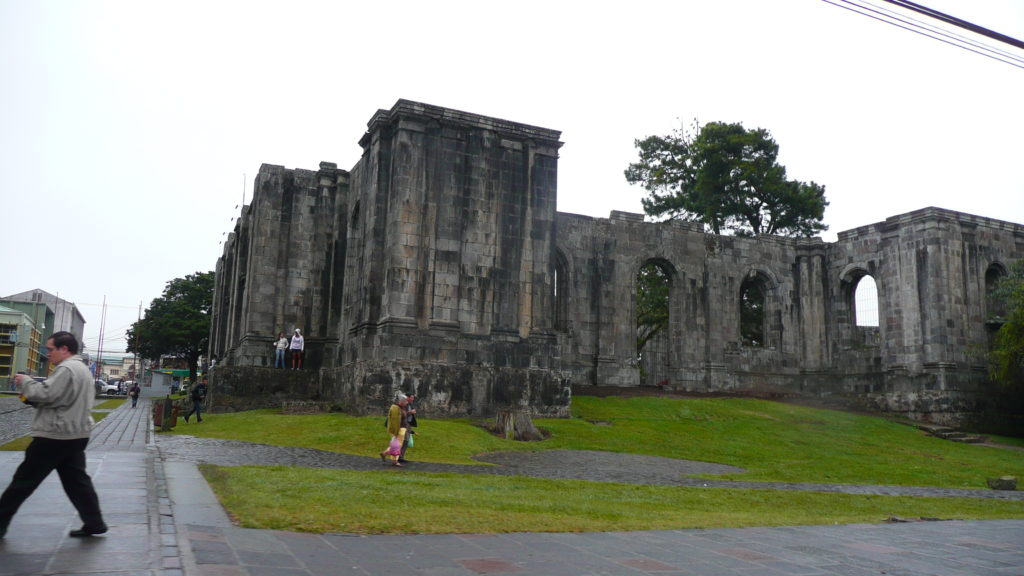
Unknown Ruins 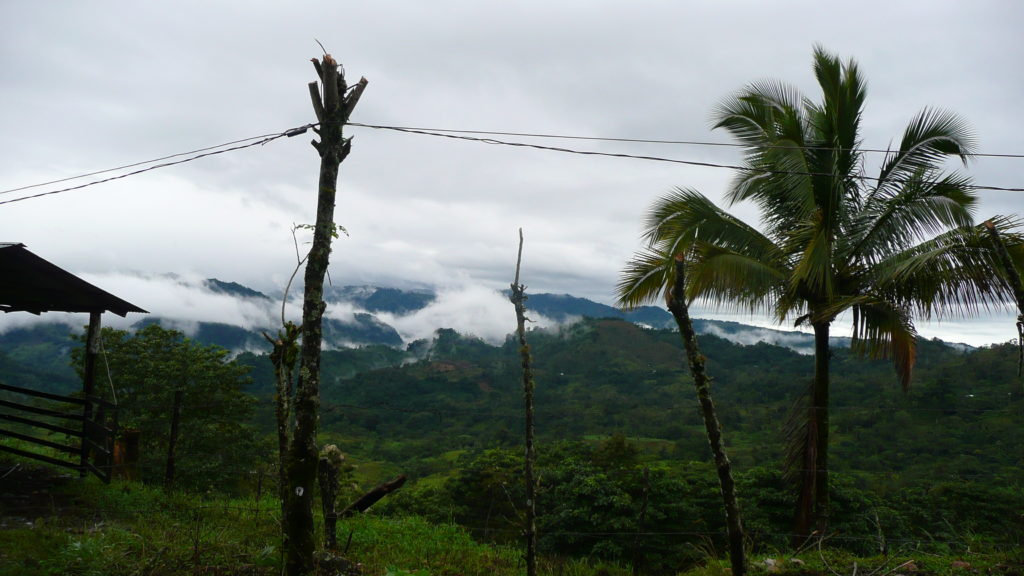
Central Highlands
We drove for hours in the rain and we were growing tired and grumpy when we came to the Los Quetzales National Park in the Talamanca mountains and found the Mirador de Quetzales hotel. A hotel about Quetzales! We turned down a muddy track and came to a lovely lodge with beautiful little cabins. We rented one, had a nice dinner, and went to bed in the chilly cabina with a fantastic highland jungle view.

Friday, January 6th
We awoke to hot cafe’ con leche’ and a warm wood fire in the main lodge. We joined a group for a guided hike to view the Resplendent Quetzal. Our hike up the wet mountain trail was well worth the effort when our guide spotted the male Quetzal in a nearby tree. We had a clear view and to our good fortune, the Quetzal soared across an open space and settled in another tree, his long tail sailing behind. On the way back down our guide spotted the female who doesn’t have the fabulous long tale. We were not able to get good photos of this fabulous bird, but the memories are great. We had breakfast and posed with the four prized Quetzal feathers owned by our host.
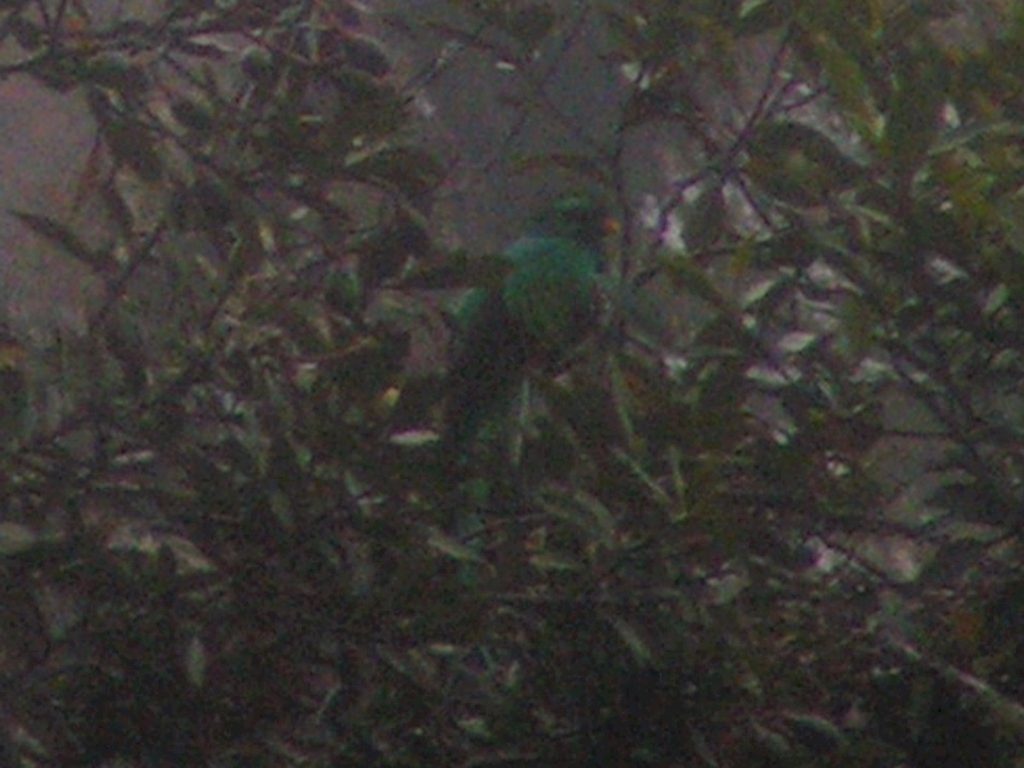
Quetzal in the Trees 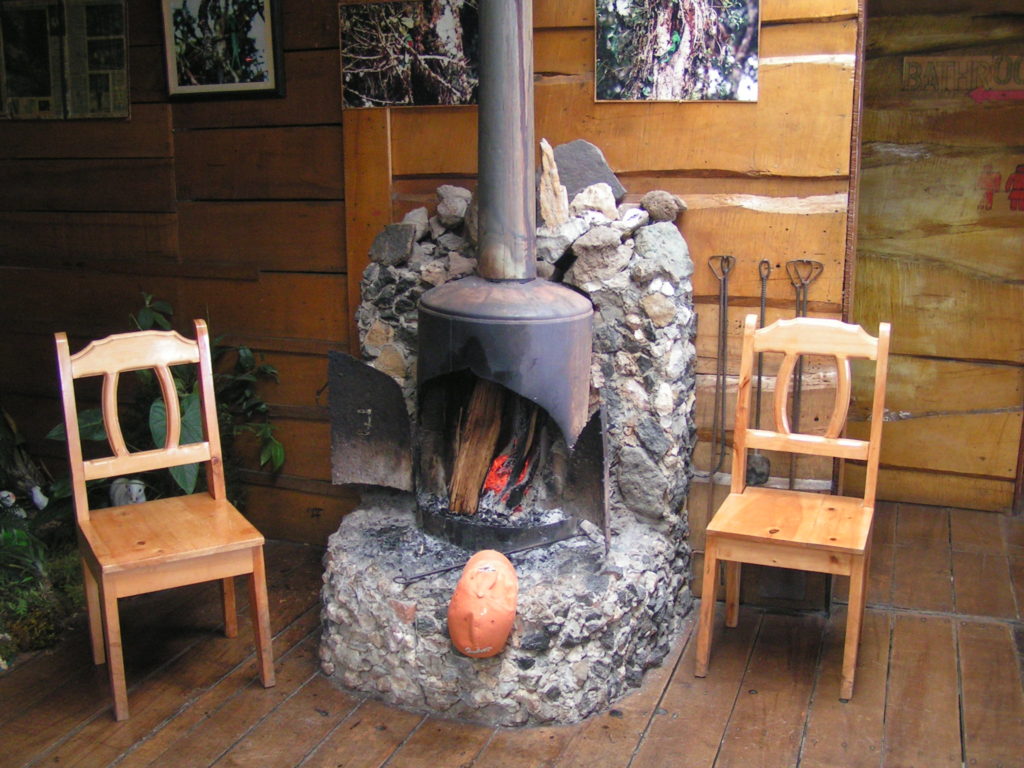
A Welcome Warm Fire 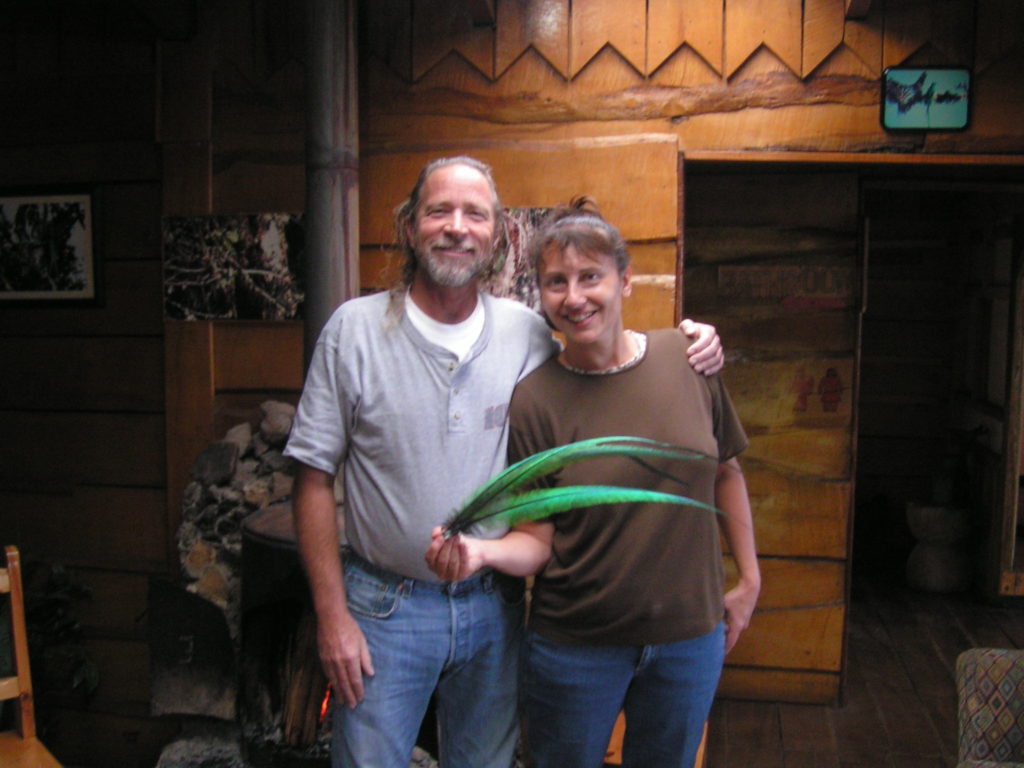
Quetzal Feathers
We were back on the road again, heading south on the highland highway. We went as far as Isidro El General then turned west toward the Pacific coast. We had one more night in Costa Rica and decided to go back to Jaco and the El Parico Azul. On the way we toured a Reptilandia filled with snakes, turtles, lizards, iguanas, camen, and other reptiles. Bob enjoyed watching the deadly Fer-de-lance snake eat some poor helpless mice while I went to visit with the giant turtle.
Our trip to Costa Rica was a wonderful experience and a great way to celebrate our twenty-five years together. It’s a beautiful country with some wonderful, friendly people.

